Flex Gallery is a wearable, rotating exhibition space wrapped around Zachary Trebellas' left arm.
Don't wanna be here? Send us removal request.
Photo



Flex Gallery and the work of Megan Altieri
In response to a lack of public art opportunities during winter, on January 11th, I launched Flex Gallery, a mobile public art space located on my left arm. For the project, I sent canvas armbands to six artists, requesting they turn them into artworks. Each artist works in a wide variety of media, and I provided them with no themes or limitations other than the dimensions of the band. Last month for two weeks, I wore the work of Megan Altieri, a local artist, high school art teacher, and member of the Collective Artspace. I spoke with her last week to learn more about her work and creative process.
Zachary Johnson (ZJ): How did you get started as an artist?
Megan Altieri (MA): I feel like my inclination towards creating was founded on my need to express ideas visually rather than a love for art. I realized that art was the most suitable avenue through which I could express my ideas. Since I was young I’ve worked through my self-discovery and my understanding of the world in a fairly abstract way. It felt more accurate to articulate an idea with a primitive line or a soft form than creating some combination of words. It just feels so literal sometimes and it limits the scope of ideas.
So I guess I started making art more regularly because I was in the market for a new language through which to speak.
ZJ: Why did you decide to become an art teacher?
MA: I wanted to teach kids how to express their ideas. Expressing an idea through a process, with patience, especially now, is hard for young people to do. Or any people, really. It has become so easy to voice emotions and opinions with impulsivity and thoughtlessness. It’s a good exercise for young people to have to translate their ideas into a visual language. It allows them to filter ideas through a more thoughtful and creative lens.
I’m making it sound like that process is actually what happens everyday at school. Of course, plenty of kids are taking my class to learn techniques so they can draw a better portrait of their cat or just to hang out. But all of that is cool with me. I actually like the diversity of their intentions within my classes. It’s like a fun game of trying to figure out what sort of experience each student wants out of the class and how I can push those boundaries.
Also, I just love human beings. A school is a fascinating place to work. You’re literally watching people become people right before your eyes. It offers me a platform to study the development of people. And also allows me to intervene in their developments when I feel like it’s going south. I’m still surprised every day how much I love them all. That level of investment was a total accident, I didn’t sign up for that shit [laughs].
ZJ: Has your job as an art teacher changed how you approach making art?
MA: Who I am as an art teacher and who I am as an artist are two entirely separate entities. They’re totally unrelated in that they satisfy two different parts of my interests and passions. But there is some convenient overlap! Like, I always tell my kids that they don’t need to listen to anything I say unless I’m making work alongside of them, as an artist. I have no business teaching them if I’m not making mistakes with them, growing with them, learning with them.
My work as an artist strays away from criteria on which I grade them. The concepts I’m teaching are mostly technical — how to render form, understanding anatomical proportions, how light affects color. Solving visual problems can be pretty formulaic. Then they see some of my work and they’re always like, “Wait…what? But I thought…”
I suppose creating art has made me want a richer art education experience for my students. Most kids want to learn how to create in a way that makes things that “look real”, that’s where most of their interest will stop and that’s okay. But the more I experience my own discoveries through creating, the more I want my students to use art to explore contemporary art concepts. In my opinion, the best ideas aren’t likely captured by the lessons taught from the curriculum. When I work with higher-level students whose work is more idea-centered, I start to feel a fusion of my passions for art education and art making. Otherwise, they tend to be two wonderful things in my life that are unexpectedly disconnected.
ZJ: This is your first soft sculpture. How did you decide on this approach and what inspired this piece?
MA: I’ve always felt that my work is conducive to soft sculpture. Soft sculpture has this visceral relatability that I’ve always wanted my work to — especially with this current concept of re-writing a logistical tool as an emotional artifact, a structural machine as an inoperative cluster of soft shapes and forms. This piece is meant to explore dichotomies and unexpected associations within a mundane object — taking an object and looking at the layers, literally and conceptually. Obsessing over it, complexifying and dissecting it. It only makes sense that things become soft when we pry into them.
This piece was inspired by a loss I recently experienced. The car became an emblem of that person. I saw it everywhere. My attention was drawn to anything red. I started to become fascinated by my own obsession with this artifact on which I projected my hurt and anxiety. A car is supposed to be this logistical tool that we use to get from one place to another. It wasn’t created to be experienced as a piece of emotional, psychological stimuli. It wasn’t made with the knowledge that you’d be haunted by the specific tone of the blinker or that you’d memorize the layout of a dashboard down to the depths of the ridges on the A/C dial. We dig around our memories for the contours of that chrome door handle, anticipating that it might also bring us back to a state of mind. So much happens in this space that it was never intended to cater to.
Somehow this structured, hard-edged, geometric machine becomes an emotional relic, completely set apart from its purpose. It becomes inoperable, it melts, almost. We dissect it to digest it, as if that process holds any answers. Even if we acknowledge the unresolvable nature of our pursuit, it seems we have to continue obsessing, searching, dissecting. Translating these ideas visually was my way of acknowledging the pathetic but unavoidable impossibility of our obsessive processing when in pursuit of solving our pains.
ZJ: What’s one of the most visually striking things you’ve ever seen?
MA: The Salt Flats in Utah. The vastness was the most powerful thing I’ve ever experienced.
ZJ: What’s next you?
MA: I have more work left to do with this concept. The more I work on the SUV series, the more sub-concepts I unearth. I want these mixed media pieces to evolve into objects. I think the experience I’m trying to offer the viewer could be carried out better through three dimensions. I guess what’s next is more of this until I feel like I’ve exhausted it.
New works by Megan Altieri will be on view alongside the twelve other Flex Gallery artists as part of the Flex Gallery exhibition at UICA in Grand Rapids, MI from June 2 – Aug 4, 2017.
This interview has been edited for length and clarity. Posts by Zachary Johnson are also available via instagram under the name Vis Ed.
3 notes
·
View notes
Photo
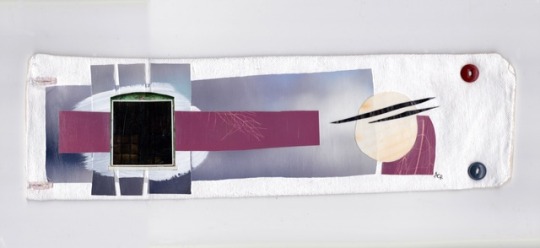
Flex Gallery and the work of Amanda Carmer In response to a lack of public art opportunities during winter, on January 11th, I launched Flex Gallery, a mobile public art space located on my left arm. For the project, I sent canvas armbands to six artists, requesting they turn them into artworks. Each artist works in a wide variety of media, and I provided them with no themes or limitations other than the dimensions of the band. Last month for two weeks, I wore the work of Amanda Carmer, a local artist and curator who currently runs Wallless. I spoke with her last week to learn more about her work and creative process. Zachary Johnson (ZJ): How long have you been working with photo collage and how did you get started with it? Amanda Carmer (AC): I graduated from Kendall in May of 2014 with an MFA with a focus in photography. [After that] I had whole year of not making anything, and then in summer of 2015, I started doing this. It started because I had boxes upon boxes of photographs, mostly digital prints that had been half started or failed projects that I just didn’t have the heart to throw away. So I started cutting them up and redoing them and then in some cases painting over certain areas. That’s how this all started. ZJ: So then what did your work look like when you were in school? AC: I was really traditional. Even though a lot of them are digital prints, the original images were shot on film and them scanned digitally. My thesis, the body of work that I showed for my exhibition when I graduated, was a combination of three types of work – it got pretty complicated, which is another reason why I do these fairly straightforward collages now. I [showed] large-format black and white portraits of my family members [as well as] black and white photographs where I purposely distressed the negatives. Those were environmental images of my mom’s house and some landscape work where the landscape was standing in for various relationships and psychological spaces. Then [I also had] photograms that were processed kind of strangely. They essentially looked like pink shadows or the inverse of a shadow, so the positive space was white and the surrounding area was a mauvish color. ZJ: If you were to do your thesis now, how do you think it would be different? AC: I probably would still be looking at my family members and our relationships to one another, but I most likely would be using more or this collage style. I’d deliberately be going in and altering faces and bodies and planting them in those environments, rather than keeping all of the formats separate. I would probably mash it all together. ZJ: So you have this mixed background. I know you from Craft House initially and you’re an artist as well, but when I was looking through your information and saw that you originally studied art education. So, how do all of these strands come together for you? AC: The best way to answer that is to put it in context of my job. First, you have to picture a room full of 16-17-year-olds in an art class. So they’re pretty into art, but they don’t know a lot. Every now and then when I’m doing a high school presentation, I’m talking about Kendall and our application process and some kind of ornery high school student will ask, “What do you do? What makes you have the authority on this thing?” So I’ll get to pull up my website and talk about how I started out studying art ed, and I taught elementary art. And then I really wanted to feel a greater connection to the art world and a community of artists, so I moved to Chicago and went to Columbia for a little while and then pursued an MFA. I’ll mention the curatorial stuff that I was doing in graduate school as well. [Those things] really do come together in a position like admissions for art school. Sometimes it sounds like a bit of a stretch, but I get to kind of teach, I get to talk about art all the time, and in a weird way I’m helping pick and choose what students are going to come to Kendall, so that’s a bit curatorial. I’ve just serendipitously found these different paths to wind up where I am now. So, I never set out thinking, “oh, I want to be in higher ed” …it sort of happened that way. And I wish that I had more time to make, and more time to look at art, and write about art at a professional level, but I try to supplement that with seeing exhibitions when I’m out recruiting in different cities and the blog that I write. ZJ: So you had Craft House and now you’re running Wallless. What’s your interest with Wallless and what’s the general premise of it? AC: When I closed Craft House, a couple months went by, and I thought I needed to find a way to force myself to stay engaged in looking at art, writing about art, and thinking about it locally. So it’s my way to do that. I committed personally to myself to do it for at least a year, once a month. The intention was to look at what’s happening in West Michigan in terms of artists that aren’t represented anywhere major. But also when I closed Craft House, there was still a handful of artists whose work I didn’t show enough of or would have liked to show more of, so I’ve gotten to explore their work a bit more through the blog. And it’s also a really simple way to do something that feels productive, which I like. ZJ: So as far as the armband, you’ve created, your artist statement talked about your interest in storytelling and its function and mechanics. How do those interests play out in this armband specifically? AC: When I look at all of my work together, my interest in storytelling and dissecting how we tell stories encompasses everything. It’s a way for me to talk about the different bodies of work that I’ve done that feel really different visually in a way that brings them all together. But what the current work is doing is mashing up imagery in a way that is connected in simple compositional terms. There’s directional movement and a bit of balance in there and sometimes repetition, but otherwise the imagery is not connected. You have to just piece it together on your own. So in that sense, I’m interested in telling stories in a way that’s very much choose-your-own-adventure. The really long, stretched out format of the armband was really a challenge. I had it laying flat, and I was testing out all of these different arrangements and then I would remind myself that you’re not going to see all of it at once. That completely changed my choice. ZJ: Oh yeah. I think the in-the-round aspect of the armband is the biggest challenge for the many of the artists who’ve made work for Flex Gallery. Last question, can you think of something in your life that was particularly visually striking? AC: Large open expanses of water with nothing on the other side – when you just have a horizon line of water and sky. That’s the first thing that pops into my brain. Looking out of the window of an airplane feels similar – when there’s a super different perspective on something that feels like it should be familiar. A landscape seen at that distance feels completely different. My favorite thing is a combination of those two – when you fly into a place that has a giant body of water next to it and you get to see both. This interview has been edited for length and clarity. Posts by Zachary Johnson are also available via instagram under the name Vis Ed.
0 notes
Photo

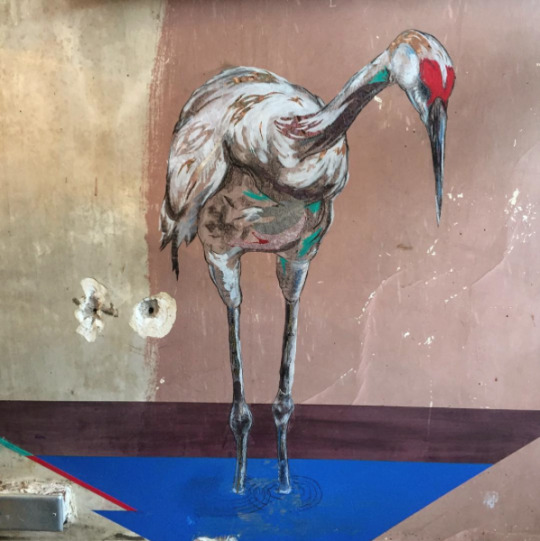

Flex Gallery: The Work of Greg Oberle
In response to a lack of public art opportunities during winter, on January 11th, I launched Flex Gallery, a mobile public art space located on my left arm. For the project, I sent canvas armbands to six artists, requesting they turn them into artworks. Each artist works in a wide variety of media, and I provided them with no themes or limitations other than the dimensions of the band. In February for two weeks, I wore the most bizarre armband yet, the work of Greg Oberle, a local artist and member of the Collective Artspace. I spoke with him last week to learn more about his work and hir creative process.
Zachary Johnson (ZJ): How did you get started as an artist?
Greg Oberle (GO): My education really stated in high school. I took AP studio art twice because I’d run through all of the courses my high school had offered. And I went to U of M and studied industrial product design for three years, and everybody kept telling me, why don’t you just be an illustrator because you always seems most enthusiastic about the drawing stage of products? Not that the ideas were lacking, I just always was sinking all my time into the rendering. That was when I decided to switch over to Kendall in 2008. I finished with a degree in illustration.
But as you can see with this project, I really take almost more from industrial design coursework than I do the drawing. I still love to play with sculpture and things occasionally happen in 3-D like this.
ZJ: What has your career as an artist looked like since graduation?
GO: So after graduating in 2010, I briefly worked at a bank…and it was a really challenging environment. Authority’s always been a problem for me. So, having left that job behind, I decided I would do absolutely anything creative to be self-employed. So I’ve done illustration, graphic design, some sculptural projects, but over time the most regular niche I’ve fallen into has been working with restaurants, doing murals and illustrations and installations. Signage, menu design, all of that, and that’s all based in Detroit, so I spend a lot of time on the east side. So that’s what funds all of my other little side projects.
Reflecting on the past six years of freelance, I don’t know if I should be proud or infuriated that my portfolio is all over the map, stylistically and in terms of medium. I think it’s made me comfortable saying yes to things that I don’t necessarily know how to do because I’ve become adept at [problem solving] – I thank my industrial design background because I really appreciate problem solving, so I don’t get intimidated anymore by going well outside my comfort zone and working backwards. I like that way of working so much that in client meetings, I tend to deliberately think of some odd weird thing that I want to try, I’ll try to push that. To give myself something to wrestle with.
ZJ: When you’re not at work and you can work on whatever you want, what do you make?
GO: Sometimes my brain feels like a big messy, three-dimensional Venn diagram and new intersections are occurring all the time. The brief overlap of what’s occurring tends to take me in one direction briefly and then I shift immediately away from that. So, it’s all over the place. It’s drawing. It’s painting. It’s sculpture. My personal feelings come out in this work. I tend to be a bit grotesque, whimsical, off the wall, fantastical in my personal work.
I could tell you a funny story about what happened for ArtPrize last year. I experienced my first encounter with censorship. It was for a really great space called Michigan House. They had another local artist and I commissioned to come in and they told us both, like, “you do you.” After the fact they were saying, “Well, we were really thinking you were going to do a mural.” I bought seven ceramic lawn ornament lambs and affixed baby arms to their rear ends. Each arm was holding a leash that was connected to the next arm — it was this really bizarre inappropriate parade, and the work was up for a whopping hour before enough complaints were filed that they took it down. So, I was paid, and I performed, and I brought the work but it made everybody really uncomfortable, so I took it down. So, these [pieces on the armband] are actually the scraps from that. I still felt motivated to tinker in that realm.
ZJ: Besides the materials coming from your ArtPrize project, what was some of the other inspiration behind the armband you created?
GO: On a semi-regular basis I tend to deal with – I still feel very childlike in many ways. The world very often doesn’t make sense to me or I find it really disturbing or scary, but also delightful. So sometimes I tend to combine elements of adulthood with elements of childhood and show how strange it is to make that transition but still have one foot back into younger years. It’s not like it’s more innocent, but…in some ways I think we grow up too fast.
And I think too I’m a little antagonstic in my nature, and sometimes I like to make things that make me laugh and make other people question my sanity. I don’t think I have a very good sense of humor, so sometimes I like to try and make something that makes me laugh or makes other people laugh. Can I tell some kind of joke through a piece?
ZJ: Do you feel you begin more with materials and start experimenting from there, or do you start with concepts and let them dictate your materials?
GO: It’s very much one or the other. Sometimes things are finished before I even have a chance to think about what it is I’m doing or why and other times it’s more cerebral; I have something I want to say and that forces the decisions along.
ZJ: So, you, Maddie, Angelica, Megan, and I are all part of this project and members of the Collective Art Space. Why did you decide to join it?
GO: It was out of excitement for the people who were getting involved. I was friends with Rachelle [one of the co-founders], first and foremost. So she was the one who invited me, and I hadn’t been a part of the Grand Rapids art community until joining. I haven’t actively gone to seek it out, and I’ve spent so much time on the other side of the state working on those projects that are site-specific… So It’s been an opportunity to embrace the local scene a little more and meet new people.
ZJ: What’s next for you as an artist?
GO: I have some very loose and free ideas right now. I’m thinking more about interior design. Working with these architects and interior designers for restaurants has made me see spaces differently. And given me a taste for what it might be like to think about the whole space rather than just the wall that’s been given to me. I’ve even started investigating MFA programs for interior design. If I were to ever decide to move into more of a career format with my work, I think I would consider that. Then I’ve also on-and-off painted professionally with a company that does interior/exterior commercial painting, and as much as I tend to not like it very much and find it pretty tiring, all the different materials that we use have given me new ideas for ways to work. It’s really interesting being in that world of construction because it’s not one I’m really familiar with, but now when I see good work I acknowledge it.
And the methods and tools behind construction are really interesting to me now. So I’ve even thought about hiring some of these contractors to help me build different kinds of surfaces or potentially even designing whole sculptures. I was recently in a space where they had updated an old warehouse and because of the way they wanted to orient the floor plan, it was kind of at an angle to all the pipes, so there were all these really funny corners where the drywall was cut in these strange ways just to fit these pipes crisscrossing the rooms, and I thought that was beautiful. So I was envisioning working with a dry-waller and someone who knows plumbing to work to build some kind of crazy piece that I could install.
ZJ: Can you think of something you’ve seen in your life that was particularly visually striking?
GO: I studied abroad in Ghana when I was a junior at U of M, and we were there for a little over a month working to develop recycling programs in the bigger cities. I kept remarking to myself and to others in the group, to the point that they were tired of hearing it, the sky there just seemed like a different color, and the Earth too was this really rich red. It was the first time I’ve been abroad and felt like I was in a strange place, like otherwordly – and it was beautiful.
And then Japan too. Japan was another place where I found a lot of peaceful moments, more than I usually get. I’m a pretty hyper, anxious person, so it always stands-out to me when I’m in a place, or with people, or standing in front of a work of art that makes me suddenly feel relaxed. It’s almost startling.
The family I stayed with in Horishima took me to the coast on the west side of the main island, and we went on a one-night, two-day fishing trip, where they woke us up at 3:45 in the morning to get out to the boats and go to this little island chain to fish. And it was communal sleeping; everybody slept in this little main room in this tiny working fishing village on the tatami mats, with futons, the whole deal. And that was really beautiful and special. I never get up that early. Seeing the sun rise on the ocean with the topography of these quintessentially Japanese islands – like something out of a Miyazaki movie, that was something pretty incredible.
This interview has been edited for length and clarity. Posts by Zachary Johnson are also available via instagram and tumblr under the name Vis Ed.
0 notes
Photo
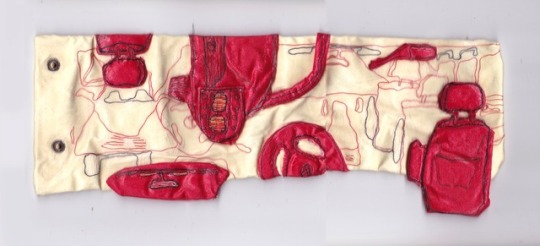
Megan Altieri. Untitled (SUV series). Thread, fabric, acrylic medium mounted on canvas armband. Flex Gallery. Locations various. 2017.
Megan is the fifth artist for this season of Flex Gallery and her band is one of my favorites. Interview to follow over on @viseducation
10 notes
·
View notes
Photo
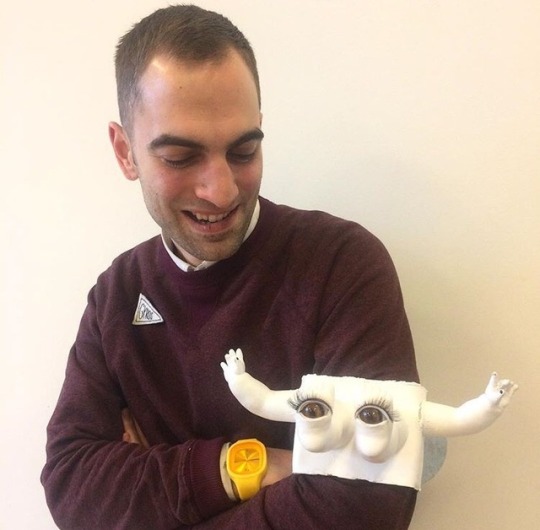
I just finished wearing what is easily the most eye-catching armband so far, a sculpture by local artist Greg Oberle (IG: gogogregory). Often inspired by materials and with a flair for the grotesque, Greg was excited to breathe new life into some leftover doll parts he had after a censored Art Prize submission. I named his creature Hank. For two weeks, I enjoyed his company sitting next to me on the bus and riding along on my scooter, eyelashes blowing in the wind. Photo courtesy of Avenue for the Arts.
0 notes
Photo
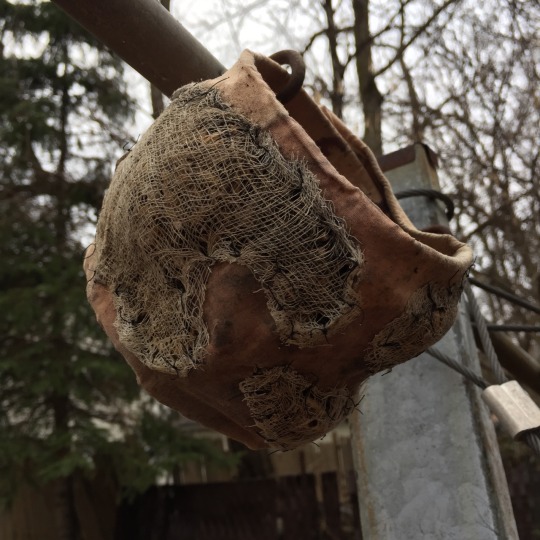
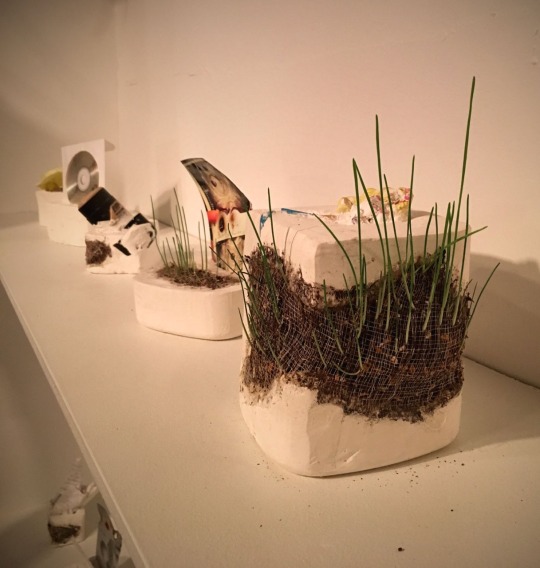
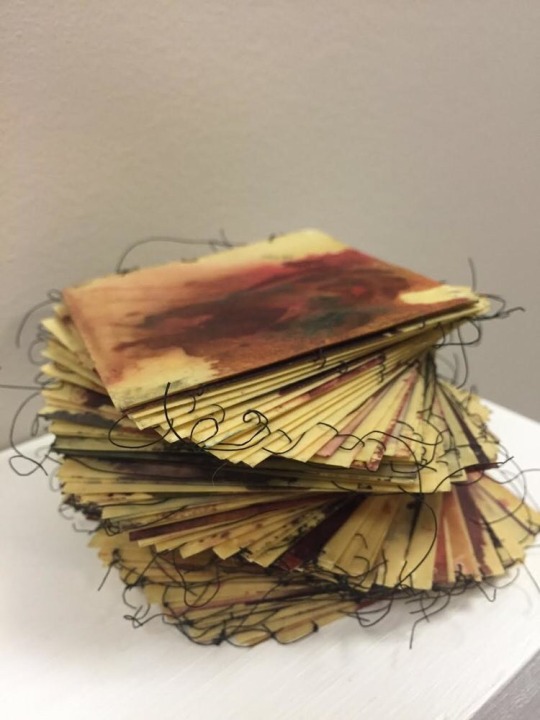
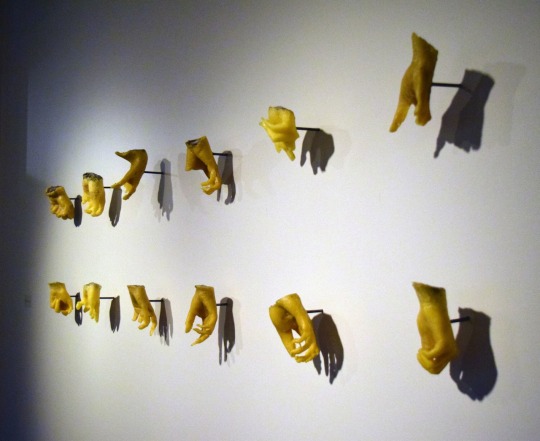

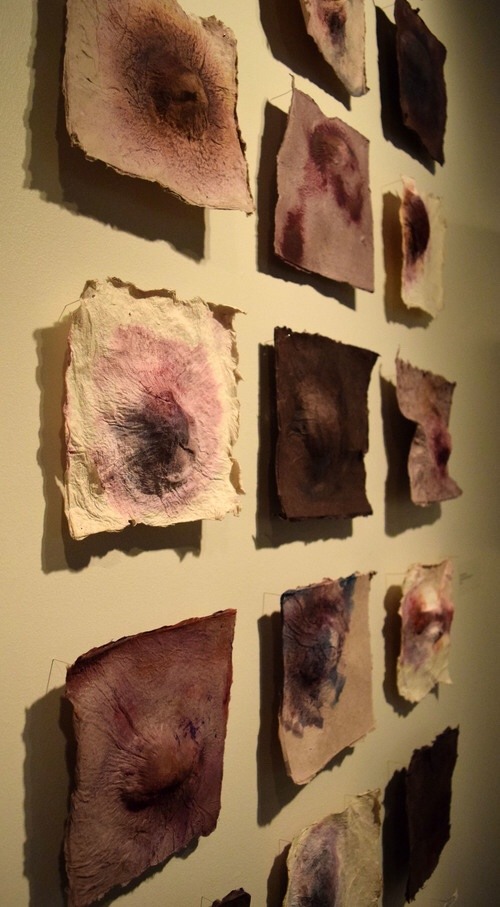
FLEX GALLERY AND THE WORK OF MADISON MAY In response to a lack of public art opportunities during winter, on January 11th, I launched Flex Gallery, a mobile public art space located on my left arm. For the project, I sent canvas armbands to six artists, requesting they turn them into artworks. Each artist works in a wide variety of media, and I provided them with no themes or limitations other than the dimensions of the band. For the past week and a half, I have been wearing the work of Madison May, a local printmaking and sculpture artist and recent graduate of Kendall College. I spoke with her last week to learn more about her work and her creative process. ZJ: How did you come to your current body of work? Madison May (MM): When I was studying at Kendall for my BFA in printmaking, the first thing that I started making artwork about where all the houses I'd lived in. I'm twenty-two, and I've lived in nineteen houses, so moving was a really big thing for me. I started using that as a point of departure, looking at these places I'd lived in and the structures of the homes. And I didn't not like that work I was making, but I didn't feel it was totally true to what was really driving me to make artwork. So, I was talking with one of my professors one day and realized that what I was hiding underneath those houses was the trauma that happened to me within [them]. So, that was a big change in my artwork. From that point, I was able to confront my personal trauma with abuse within my family, with my father. As soon as I was able to deal with all the crap that happened to me, I thought, “Ok, now I want to take all this shitty stuff that happened and use it towards a greater good.” So I was starting to notice that a lot of other people that I was talking to, specifically women in my community, were like, “hey, that happened to me.” or, “yeah, I have very similar experiences”. And I was really outraged. I mean, Grand Rapids is a really small community and for as much as I was showing my work, which was quite a lot, there were quite a bit of people [saying these things]. So, I thought, “this is really serious to me.” I took the rest of my BFA career to talk about that. And then after I graduated in May, I did an Art Prize piece that was specifically about collecting objects from women that were abused and transforming those. So I'm kind of in the middle now. I don't really have a clear trajectory. I'm back to looking at my houses again. I'm not entirely sure why. I'm still working with some of those stories of abuse, but I just needed a break; it was really emotionally heavy. Also I'm now looking at my family, looking at the relationships that existed within it and those structures. Zachary Johnson (ZJ): How did you evolve from printmaking to the mixed media you're using today? MM: I describe myself as a process junkie; I can't stick with one thing. The reason that I was drawn to printmaking is because it's so process-oriented. You're not just working with a pencil on paper. You're starting with pencil on paper, then you're working with copper, you're working with a stone and doing different things with acids and inks, so it's very hands-on and process-based. The idea of multiples in printmaking was something that was really important to me, but that shifted when I was dealing with all of the traumatic artwork that I was making because they were singular objects that I didn't want to reproduce; they held so much import on their own. So, I'm also a sculptor. I love using plaster, steel, wood, and all of that. The proces depends on what I'm making. I started with plaster with the Art Prize show for Brianna because I'd recently been working with it, and I liked how heavy it was. And I felt encasing the objects from victims of abuse in plaster was very metaphorical because of the feeling that the objects gave off on their own. ZJ: You mean in making them heavier and more substantial? MM: Yeah. Sinking them in a block of plaster, that's pretty severe – making them something very permanent like that. So, I switch between starting with a material and figuring out what it means later to having a concept and carrying that out. And typically when I have an idea from the get-go, I work with it in print media because printmaking is very orderly. You have to have a plan as to what you're going to do. The things I make sculpturally are a lot more experimental. They range a lot more in the materials I use. ZJ: So then where are you moving now, material-wise. Do you have anything new you're exploring? MM: I'm really excited. After I graduated, I needed a break from printmaking because I'd been doing it for four years, and I ended up graduating with a primarily sculpture-based show. But then I got hired back at Kendall [in the printmaking department] and really missed printmaking and had the ability to do it again. So I've been looking at ways of mixing my two practices, and there's a specific process called collagraphy. Building the plates [for printing] out of sculptural materials and making multiples seemed like a good route to go. So I'm doing that right now. I have a show coming up at The Factory February first, so I just wanted to make new work. I was tired of showing the same stuff. So right now I'm doing some collagraphs of the way that I remember the houses that I grew up in. So I went and found all of the houses that I lived in. ZJ: Where are they? MM: All around Grand Rapids. Some of them are in Forest Hills, some are in Wyoming, East Grand Rapids, a lot of them are up this way in the Northeast Side, Kentwood, Byron Center. I didn't actually drive out there, though I have before. I did a lot of Google image searches and used Google Maps. And used those for a base of what the houses looked like. For example, one of the houses I'm doing right now, I remember being really small, and it feeling very tall. So I'm making it super exaggerated and tall. So, they're surreal in a way, but not fantasy, just exaggerated. ZJ: So, more based in the inaccuracies of memory? MM: Yeah. On top of that I'm working on a couple of other new prints as well which are going back to a couple of the processes like wood cut that I haven't done in a really long time. I'm using my recent breakup as a point of departure for that. I'm examining what happens when two people who've been together for three years decide not to be together, but they're living in a home together. So there's always the idea of a home for me. The home is constant. I've been doing a lot of thinking about why I make work about the things I do. Now that I'm single and reflecting a lot, I've concluded that I make work about relationships because that's something that's really hard for me. We moved school districts six times. I never had the chance to learn how to make friends and make lasting relationships. I think that's why I'm so interested in the dynamics of people. ZJ: The armband you created and some of your other recent works incorporate grass seed. How did you get the idea to start working with it? MM: I was in a collage class and everyone was doing works on paper. I thought, “I'm tired of paper. I'm tired of flat stuff. I'm over it.” I went back to this memory of having a pair of shoes that I'd outgrown and that we used as planters on our front porch. That was a thing in our neighborhood that people would do. I had this pair of shoes and I was thinking a lot about materials. Instead of thinking about making imagery-based work I was thinking a lot about how materials can be metaphorical. So I recreated a pair of shoes thinking about how ironic it was that I was going through all of this really awful stuff at the time, and there was a lot of hurting and sadness and anger and pain and physical pain being caused in my family, and it reminded me a lot of this death inside of me. So, it was an homage to the shoes that I made [at the time], but also I started thinking about filling things with dirt and grass as a sort of little grave. Filling the object that had import and referenced that time reminded me a lot of a healing process. So the grass, with its lifespan, represents a lot of those things for me. I think it can be both hopeful and not because it ends up dying in the end. It's metaphorical of a relationship starting and growing and dying and ending. Everything always comes full circle. I think with the cheese cloth and suture [of the armband], it especially makes it resemble a wound. But also just looking at it, it really reminds me of a band-aid. I've never realized that. But this piece of fabric that has these bruise marks that I printed. It wraps around your arm, it looks like a band-aid. I've never really made something for someone to utilize, so it changes it in a really exciting way. I don't know about your life and your pain, but it becomes yours because you're wearing it. ZJ: How do you feel about being an artist in Grand Rapids? MM: For right now, I love it. I have mixed feelings about it. I really love the Avenue for the Arts art scene. I did Art Prize; it wasn't a bad experience. It just wasn't my thing. I feel kind of like I'm outgrowing the city a little bit. I know so many people, and that's one of the reasons that my heart is here. I've always lived in the greater Grand Rapids area. So, it would be really hard to leave, but I've shown at every single gallery multiple times. It's just getting to the point where maybe when I go to grad school, it's not going to be here, you know? But, I really like it. It's grass roots. That's one of the things I really appreciate about it. It's a lot of people doing the ground work for this great thing that we're all carrying. It's incredible. Madison May's work will be on display in a solo exhibition at The Factory from February 1st. The Factory is located at 38 West Fulton Street, Suite 400, Grand Rapids, MI 49503. This interview has been edited for length and clarity. Posts are also available via instagram at viseducation.
0 notes
Photo
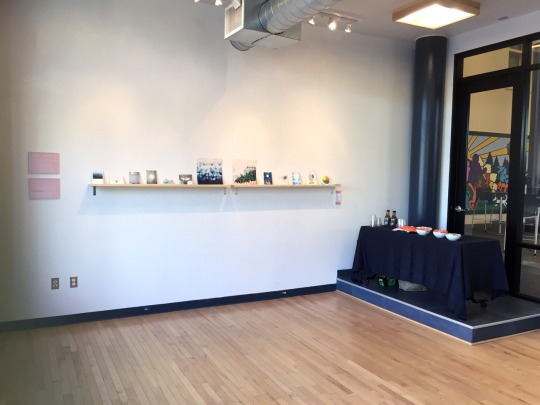
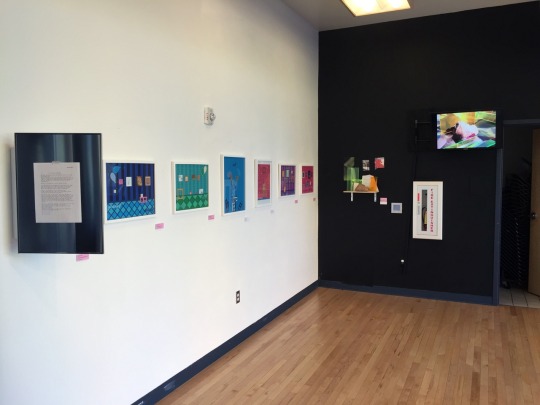
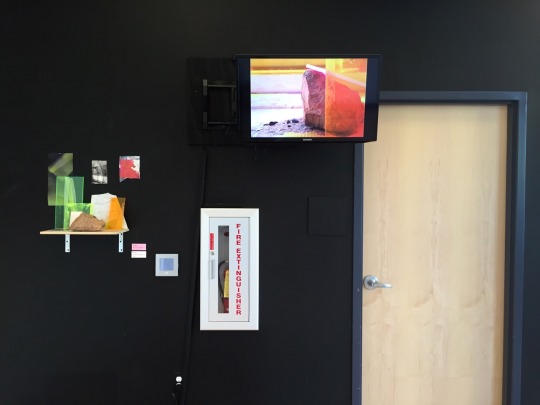
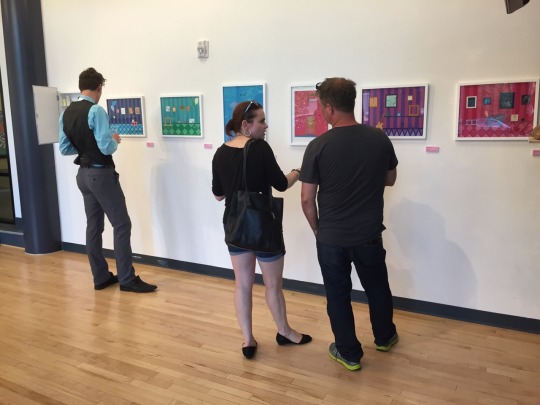
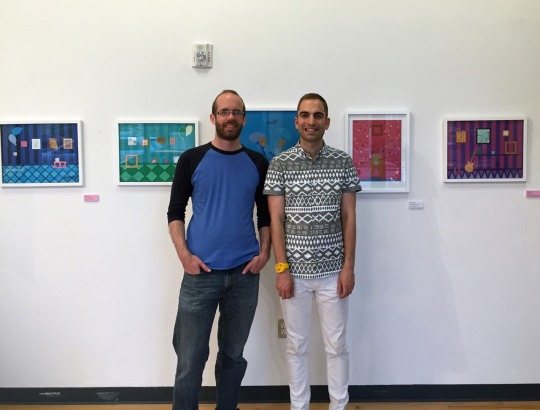
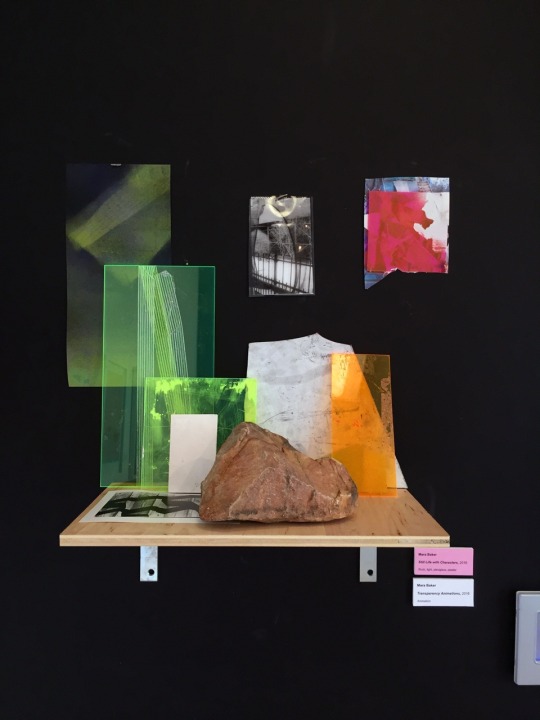
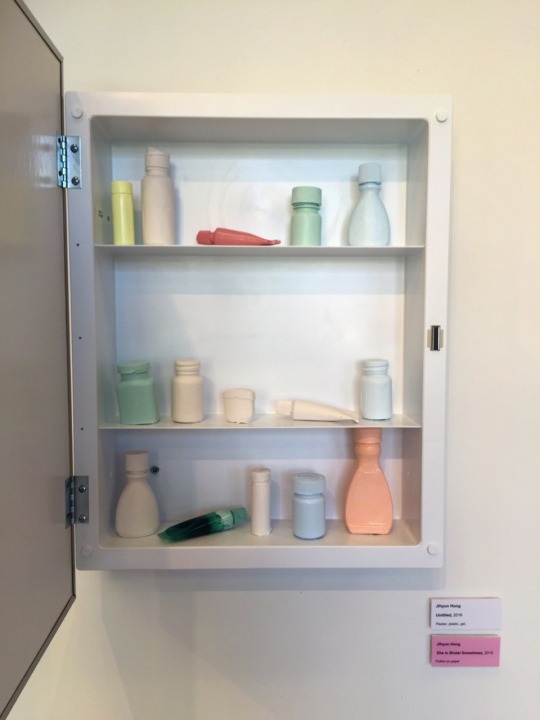
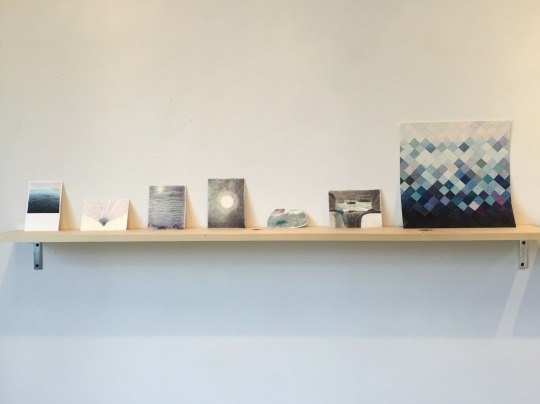

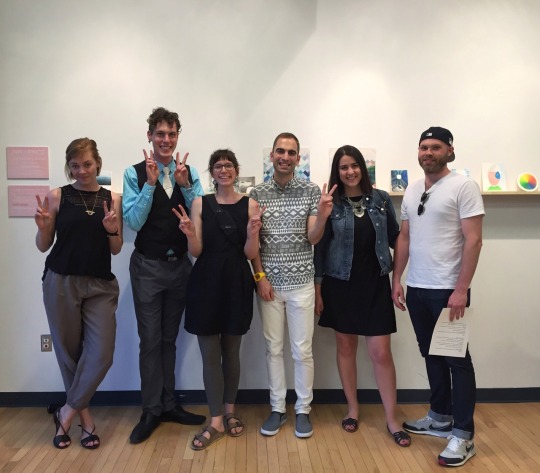
Last Friday, Influence opened at the Avenue for the Arts [gallery] Space in Grand Rapids, Michigan. It features Mara Baker, Jihyun Hong, Rumi Koshino, and Nathan Vernau as the artists and myself as the curator. Though the preparation was exhausting at times, I’m very pleased with how the show came together. The opening had a steady turnout, and many people found pieces they really enjoyed. I was really glad that Nathan came by from Chicago as well.
For those of you in the area, the space is located at 307 S Division Ave. Open hours are Fridays 9:30 to 5pm, or by appointment (I’d be glad to come and show you the exhibition). To contact me about visiting the show, e-mail me at zj.zacharyjohnson [at] gmail.com.
1 note
·
View note
Photo
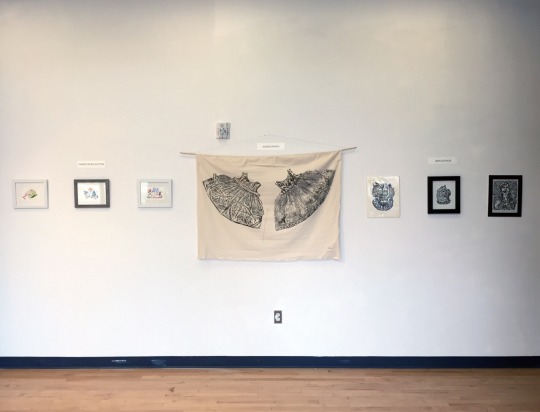
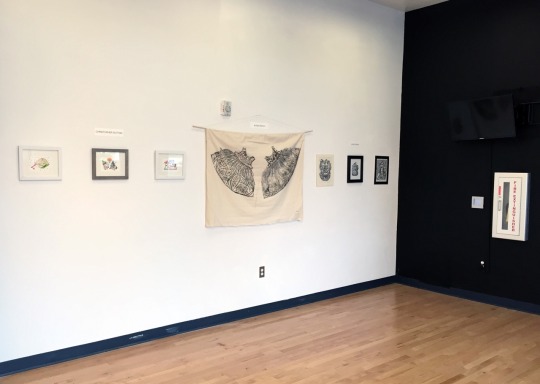
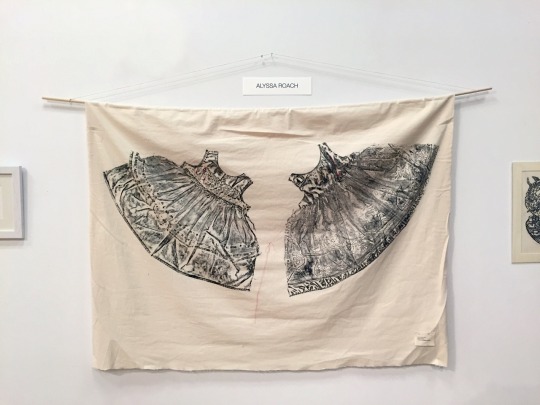
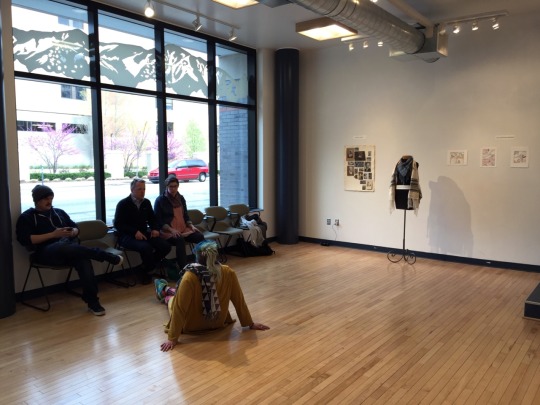
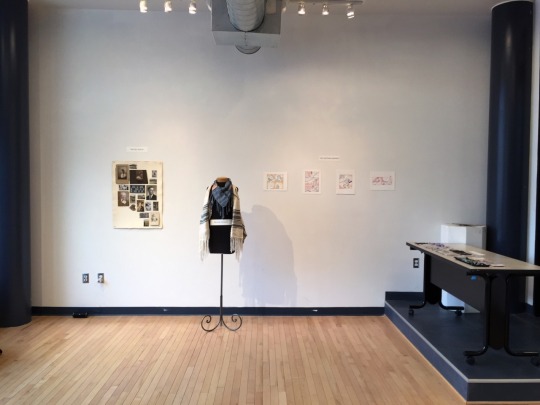
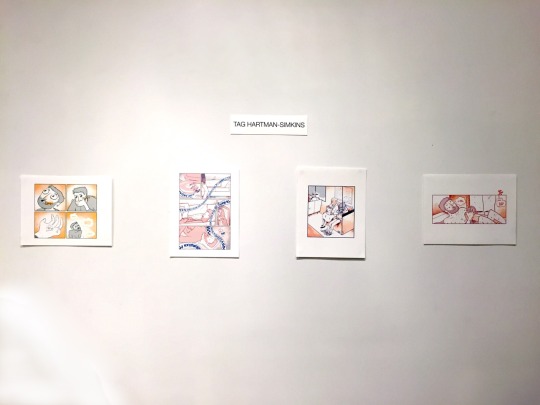
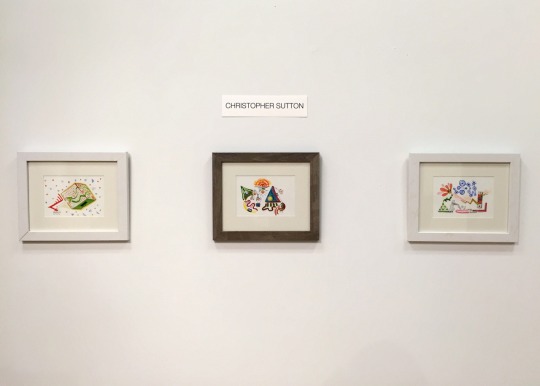
From 6-9pm on May 29th I held a closing reception for Flex Gallery at the Avenue for the Arts [gallery] Space in Grand Rapids, Michigan. I displayed each participating artist's armband along with prints, collages, textile pieces, and other additional work by the artists. Visitors were enthusiastic, fluffernutters were in abundance, and the work looked great in the space. It was a great way to end the first year of the project. Overall, I had a wonderful time working with each artist, and was very excited for the press the project received. I can't wait to do it again next winter.
2 notes
·
View notes
Photo
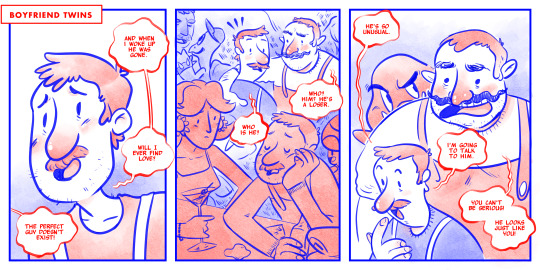
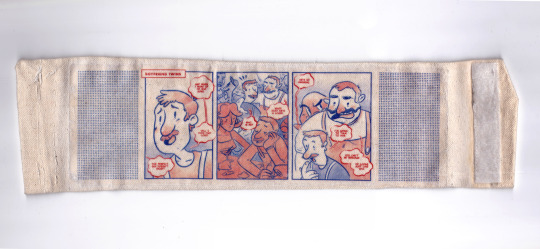

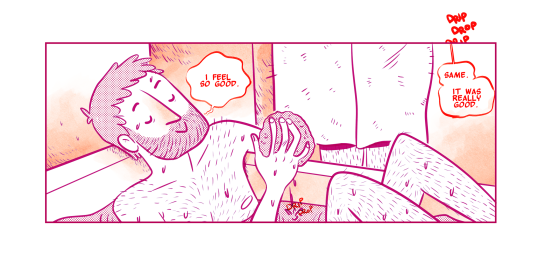
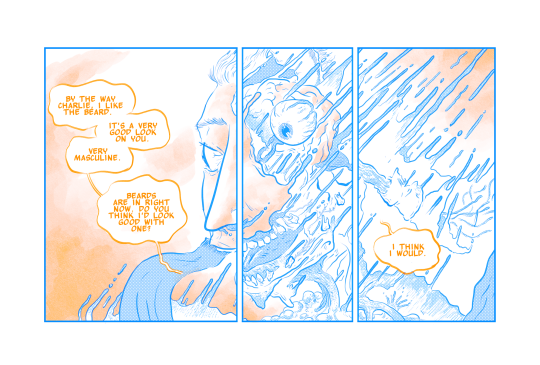
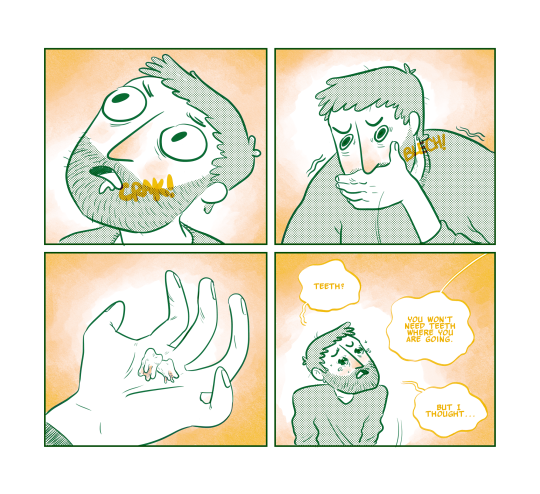
FLEX GALLERY AND THE WORK OF TAG WR HARTMAN-SIMKINS In response to a lack of public art opportunities during winter, on January 11th, I launched Flex Gallery, a mobile public art space located on my left arm. For the project, I sent canvas armbands to six artists, requesting they turn them into artworks. Each artist works in a wide variety of media, and I provided them with no themes or limitations other than the dimensions of the band. For two weeks last month, I wore the work of Tag WR Hartman-Simkins a Galesburg, IL native now residing in New York City. I spoke with him to learn more about his work and creative process.
Zachary Johnson (ZJ): What did you go to college for and how did you end up starting when you did?
Tag Hartman-Simkins (TH): I went to college originally for English in 2006 when I graduated [high school], along with everybody else. But I only did one semester, and it wasn't really my thing. I went to a big state school, Illinois State University. But I didn't have a very good time there...so I took time off and just worked for a few years. I ended up moving to Chicago from 2008 to 2010. People ask me, “What did you do during that time?” I tell them, “not much.” I just worked and lived life. I found things I liked and what I wanted to do. I eventually moved back to Galesburg and went to school. We have Knox College, but we also have a community college, and I enrolled [there] and took a few classes. When I transferred to Knox, I went there for creative writing with a minor in graphic design. So, I did a lot of visual art, which is what I did in high school, but I ended up in creative writing.
ZJ: Have you always had that dual interest in writing and art?
TH: Yeah, I think so. It was something that was kind of competitive. The feeling I would get is that I had to pick one or the other. I've drawn since a really young age, but I had teachers who thought my story abilities were very good, that I was very good at writing. I had a father who was an English teacher, so I was exposed to literature and all that very early. And that got developed alongside drawing. I didn't really know which one to pursue. I think I was afraid to pursue art even though English wasn't any more lucrative career-wise [laughs]. So, I went to school for English, but ended up doing creative writing anyway and mashed it up with art in the end.
ZJ: Is that how you got into comics? That seems like such a logical way to combine the two.
TH: I think that's something I was interested in at a young age. I did have the whole anime interest. I made a lot of friends who liked comic books but mostly manga. So, I got into that at a young age. I liked film and I liked comic books; I liked the mishmash of the two, [writing and art], but I think later on in college I came back around to the idea of comics as something that I could do to wed the two.
ZJ: So then, if you majored in creative writing and minored in design, how did you learn the conventions of putting a comic together?
TH: I don't know. I think I just sort of tried it myself. It's something I'm still learning as I go. I have a chapter of this book I've been working on, but it's something of a difficult struggle to figure out. Going in and looking at comics that I like, figuring out how they're put together or how they sequence a story, it's not something I was ever able to take a class on, so I really only have personal experience. Then on top of that, I did some film and television writing classes, so I know how a film should be sequenced, and how that should be put together, so if anything, I rely on that. I think I'm more used to the way Japanese comics are sequenced, and they're not at all sequenced the way US comics are done. ZJ: Oh yeah, the pacing's completely different. TH: I'm used to the way they seem really decompressed compared to American comics. Especially because when I was young I read things like Dragonball, and [those manga] are meant to be spaced out over weeks and weeks and [dozens] of books it seems like, so I feel like they just let things linger for a really long time. Then American comics are just once a month, they've only got thirty pages, and they have to fit everything into it.
ZJ: So do you feel like you take manga's sense of timing and spacing into your work? TH: I think I do. I get worried that I linger too much on things or I try to draw things out too much. I think that's an issue generally with writing. Writing for screenplays and drama, you have to take into account how long someone's on stage or on screen and if that's going to hold someone's attention. I tend to write really long scenes or dialogue, and then have to worry about how I'm going to take it and space it out on the page, and how many pages that's going to take up. It's something I'm still learning.
ZJ: You mentioned film. Do you feel you're influenced by any films in particular?
TH: With writing I think I am. I like the idea of auteur cinema, Wes Anderson, Quenton Tarantino, etc. – the idea of the writer controlling everything. I like the idea of making a graphic novel as one big statement and then moving onto another one. I'm used to manga series being several graphic novels in a big, thousand-page series. I like one contained artistic expression.
ZJ: How long have you been working on your current graphic novel?
TH: Since I left school [last year]. It's mostly been writing it. It was based on a screenplay I wrote for one of my classes. I wrote a full-length screenplay, which was not the assignment, but I was really feeling the story, so I went with it, and then I had a screenplay and I thought to myself, “I'm never going to make a movie.” I'd wanted to make a graphic novel anyway...so I thought, why don't I try this?
I think in the US, basically if you're going to do a graphic novel, there has to be a reason for it to be that way. This could easily be a book. I could just write it. I feel like people want justification for drawing pictures over and over again, I think that's why [mainstream comics] are so science fiction or superhero dominated. You're justifying that you're making people read a graphic novel because otherwise filming it would be hard or expensive.
ZJ: I totally get what you're saying. With manga, the medium is seen as just another means of expression. There's a lot of manga that could just as easily be a live action TV show or a book, but I think in Japan, the thinking is, “This is an option. Why not take it?”
TH: There's so much manga like that – Osama Tezuka did this series called Adolph that was basically a 1940's WWII story. There's nothing fantastical about that. It's something that could have easily been written and filmed, but I like that there's a range of those genres and subjects in manga that [historically] in American comics wasn't there– although there are a lot of graphic novels now that don't do anything remotely fantastic. I read This One Summer, and it's just about a young girl at a vacation home in Canada all summer, and that's it. There's nothing science fiction about it; there's no reason it had to be drawn. It's a wonderful graphic novel, so that's something that I want to do.
ZJ: What's the synopsis of the comic you're working on?
TH: It's basically a gay love story. It's based on certain experiences I had in Chicago when I was twenty. I want to explore gay issues when it comes to identity in the Midwest. It's a slice of life, an examination of life in Chicago at a certain time for a young, poor gay man. He's feeling out life around other gay people when he's never really been around or interacted with them before.
ZJ: What do you feel is next for you artistically? You're working on this now, but do you feel you have other artistic ideas on the horizon?
TH: School was just so intense for me. I went in at twenty-three and left at twenty-seven, so I knew exactly what I wanted to do and was laser-focused all the time. I had painting classes and drawing classes and writing classes and threw myself into them and didn't do anything personal. So, the moment I graduated I thought, I can finally do one thing, one project and work on that and get it done. So, I don't think this will be done for a couple years. This interview has been edited for length and clarity.
15 notes
·
View notes
Photo

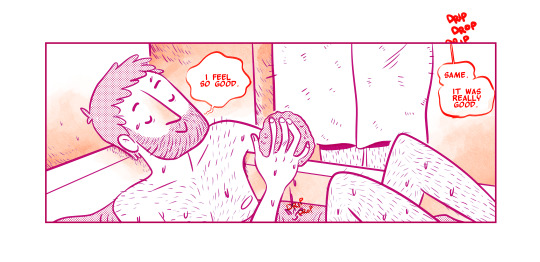
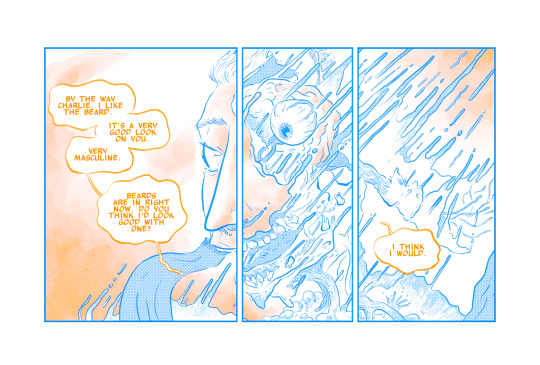
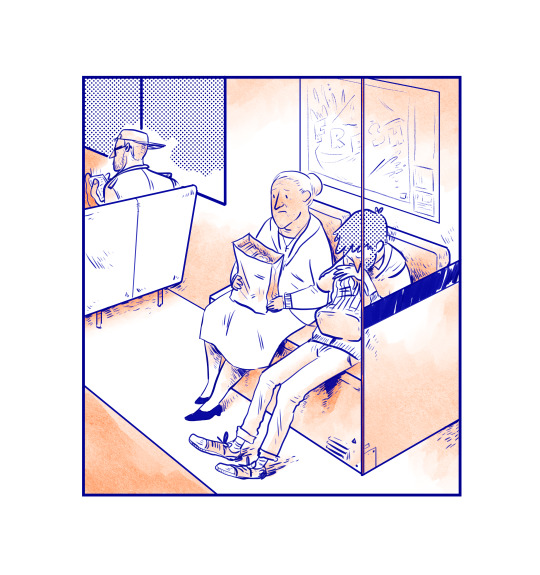
Tag WR Hartman-Simkins. Boyfriend Twins. Image transfer on canvas. Flex Gallery. Grand Rapids, MI. 2016. -------
Text Man 1: And when I woke up he was gone. Will I ever find love? Man 2: The perfect guy doesn’t exist! Man 1: Who is he? Man 2: Who? Him? He’s a loser. Man 1: He’s so unusual. I’m going to talk to him. Man 2: You can’t be serious! He looks just like you! ------ Currently I’m in the second week of wearing the above armband by Tag WR Hartman-Simkins, an artist and designer originally from Galesburg, IL, and a recent transplant to New York City. I’m very pleased to have a comics artist for the final band of this season of Flex Gallery; it’s nice to end with some queer humor. And I love Tag’s works for their subdued colors and the ways they capture the small, personal moments of life. Expect an interview with him later this week.
12 notes
·
View notes
Photo
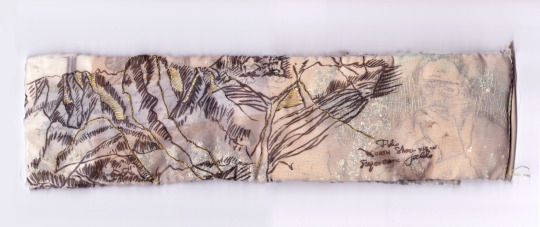
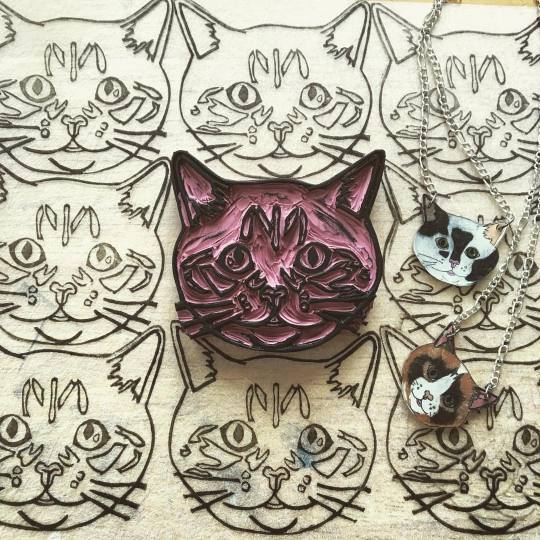
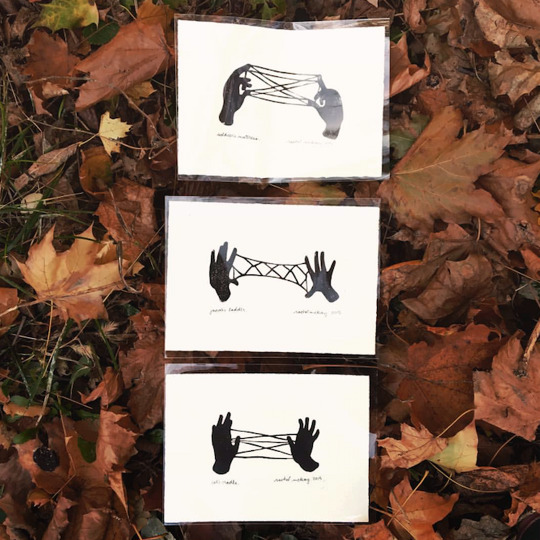
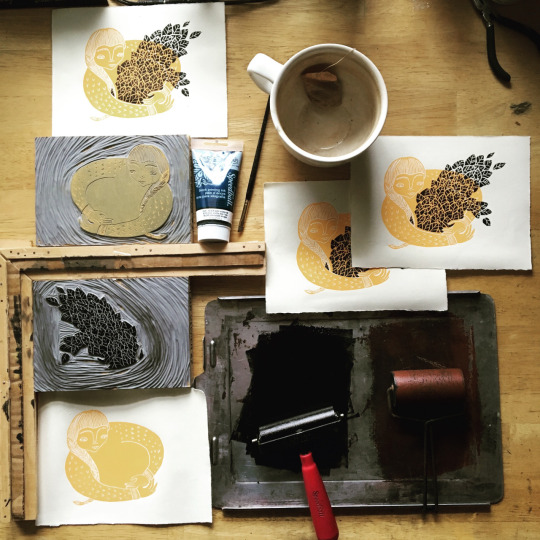
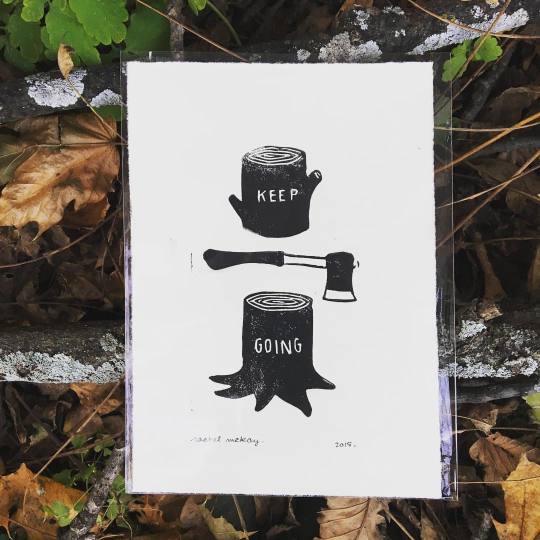
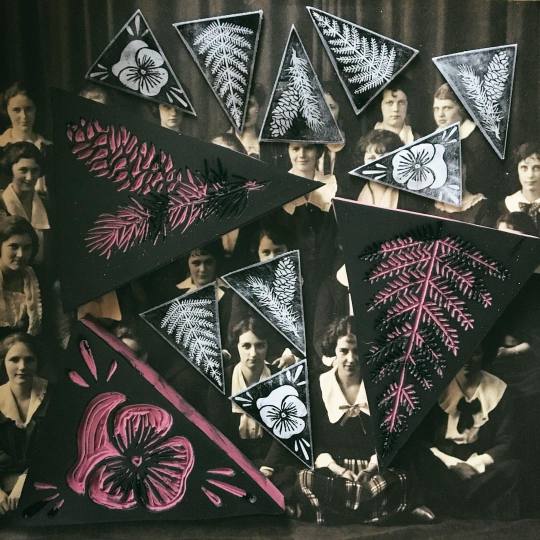
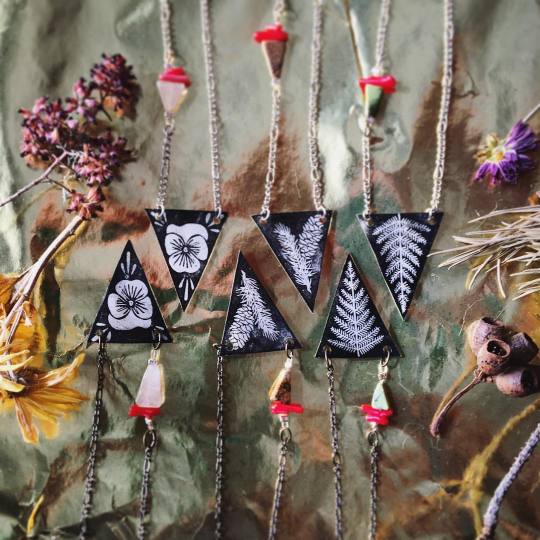
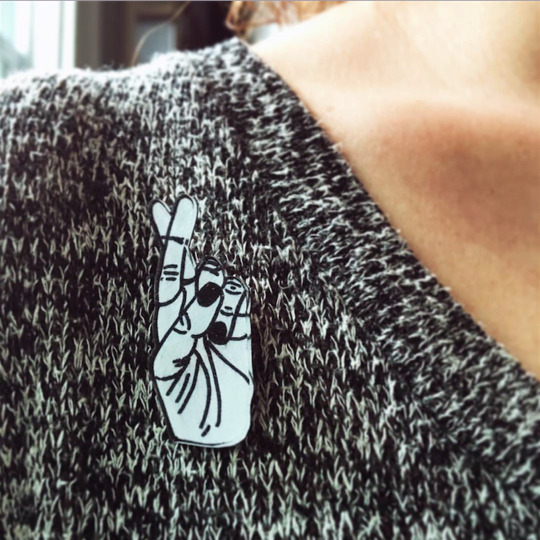
In response to a lack of public art opportunities during winter, on January 11th, I launched Flex Gallery, a mobile public art space located on my left arm. For the project, I sent canvas armbands to six artists, requesting they turn them into artworks. Each artist works in a wide variety of media, and I provided them with no themes or limitations other than the dimensions of the band. For two weeks last month, I wore the work of Rachel McKay a local printmaking artist. I spoke with her last week to learn more about her work and her creative process. Zachary Johnson (ZJ): How did you first get started making work?
Rachel McKay (RM): I can't remember a point where I didn't. Both of my parents...were very encouraging towards creativity; that was a big part of both of their lives growing up. My grandmother was really the biggest influence. She made her entire life through her art. She garnered quite a name for herself in Detroit. She had this awesome group of women that she would create with – something like the Four Directions or the – it kind of sounded like they could also be a jazz band. They curated shows together, and they would gather and critique each others' work, and she made her adult life around this very serious view of art...And growing up with that, anytime that I would go visit her, we would spend a long time in her studio and she would teach me whatever she was working on. She would include me, even from a really young age. She would show me how to do monotypes on her printing press, which is now in my studio. I'm really grateful for that. I always wanted to be just like her since I was little – [I'm] still working on it.
ZJ: So you basically just kept with it?
RM: Yeah. I've always been the kind of kid who has thinking hands. Everything that I think and process is with my hands, which translated really naturally to making when I was younger. I would have an idea, and I couldn't sketch it out, I had to try to figure it out in a tactile way, and that turned into sewing and all these little kids things that got more serious when I got older.
ZJ: Are you mostly self-taught then?
RM: Yeah. I took whatever classes I could in high school, but outside of that I haven't really had anything formal. I went to Grand Valley [State University] for photography and studied film photography on that level but no art classes outside of that.
ZJ: What's your approach to learning new skills?
RM: Stubbornness. Once I get it in my head that I want to be able do something, there's two very distinct parts of myself. One is “we should sit down and research” and there's “step aside, I'll figure it out.” The two meet somewhere in the middle. There's trial and error, but I'm never too frustrated by it. I really enjoy it. Even if the first batch or two of something go hideously wrong, it still feels like I'm learning. It's exciting; it's like a puzzle.
ZJ: A lot of your work is illustrative or figurative. Where do your visual ideas come from?
RM: I'm always influenced by children's literature. There's something there that really resinates with me. I spend a lot of time looking at children's book illustrations, graphic novels, and natural history text books and those ways of illustrating thoughts, feelings, and emotions. A lot of it is also things that I zoom in on in my daily life. I did this series called Common Place. I've always had a fascination with what hands can do, and what that looks like. So, [in the series] I was looking at everyday things that go unnoticed and wanting to amplify those and make them beautiful. I definitely think about that a lot. A lot of my work is about ordinary things, but I think those things are worth zooming in on. Because ordinary doesn't really exist if you get close enough.
ZJ: What's next for you?
RM: I really want to buckle down in terms of how I spend my public/selling art life. [I want to] be braver in my choices, applying to things I don't think I'll get into, and to things where I think I'll have an opportunity to grow. A lot of the shows I've done in the past I've enjoyed, but they're not exactly where high-paying customers go, and they're not exactly where I'm going to meet new people or people that will help me move forward in my career. So, I want to be more intentional about that and start applying to things out of state.
I also really want to explore zines. They're not something I expected to fall into, but they've been a really expansive world for me. I used to write a lot when I was younger, and I really lost that part of myself until starting to explore zine culture and zine life more. Most of my zines have been very illustrative; I'm starting to add more writing to them. I have so many scatterbrained ideas, and I really want to bring them to a space of unity – something that could be a series. I want to invest time in longer term projects.
ZJ: What was the inspiration behind the armband you created?
RM: The whole thing is essentially about memory and loss. This band is about two people who were important to me in different ways. One being my uncle Mike and the other being my grandmother, who, like I said, was...incredibly important to me. She traveled a lot and kept daily diaries, and all of these images are from [her diary] when she visited my uncle in Hawaii. He lived there for most his adult life. And this is right when he was first diagnosed with lymphoma, which he eventually died from. After my grandmother passed, a lot of my family members took one of her notebooks because she had so many. So, I kind of blindly took one without reading it much. This was the first time I sat down with it, and I was really surprised that it was this exact one. When you're young you don't think of people that you look up to having fear, of them being terrified and vulnerable and unsure of the future.
ZJ: And they don't let you see that.
RM: Exactly. So this was a very heartbreaking read but also confirmed that she had boundless empathy like I knew she did. It hurt on a few levels: her fears about being a parent and the thought of having to someday bury her child – nobody wants that. So, the first layer was a scenery sketch of sugarcane fields. The geometry spoke to me. My grandmother did a lot of mountain painting, so it was cool to see [a sketch] that wasn't Colorado.
The layer directly under that is a sketch she did of my uncle during one of his better days. I liked that it was an imperfect moment. I liked that he has his hand in front of his face, and he looks kind of lost in thought. I don't know if he sat for her, or if she just sketched this while they were having coffee. I wonder if she just knew her kid so well that it was easy to fill in details, or it was one of the many times where one of her tolerant children sat still for her for hours.
ZJ: There's one more element in the middle layer, the paper inside. I could never read it.
RM: It says, “Circle island tour. Mike was either feeling much better or has masked his condition to make sure his dad had a good time.” That one line was the first thing I read when I opened that diary. Mike was sick for so long, it was startling to have that realization that all three of the people in this sentence are gone now, and it's all of their relationships summed up so well. They were all just people who were thinking of each other first, and I feel like a lot of that's summed up there.
And the [bottom] layer, I intentionally put things over, so there would be something to reveal when the flowers [between the top and middle layer] broke. There's a quilt covering Mike with one of his feet sticking out. He was famous for his calloused feet, so I saw a spark of him as a person in that one because it's something that I remembered and something that I could relate to. It was also nice to just see a shabby quilt and some books on a shelf.
So, these layers get more personal as they get deeper. In between the two topmost layers there were pressed Queen Anne's Lace flowers because I wanted to create a vail, something that would intentionally break down. When you lose somebody everything is horrible, but as time goes by and you have more time and space, things really become clear. So I wanted to illustrate that in a physical way where these delicate, fragile flowers were blocking everything behind them, but they broke as you went about your day. They shattered and fell to the bottom, so [one] could see behind them for the first time. [The grieving process] is painful, but everything starts to make more sense and becomes easier to get through. This interview has been edited for length and clarity. Posts by Zachary Johnson are also available via instagram under the name Vis Ed.
4 notes
·
View notes
Photo
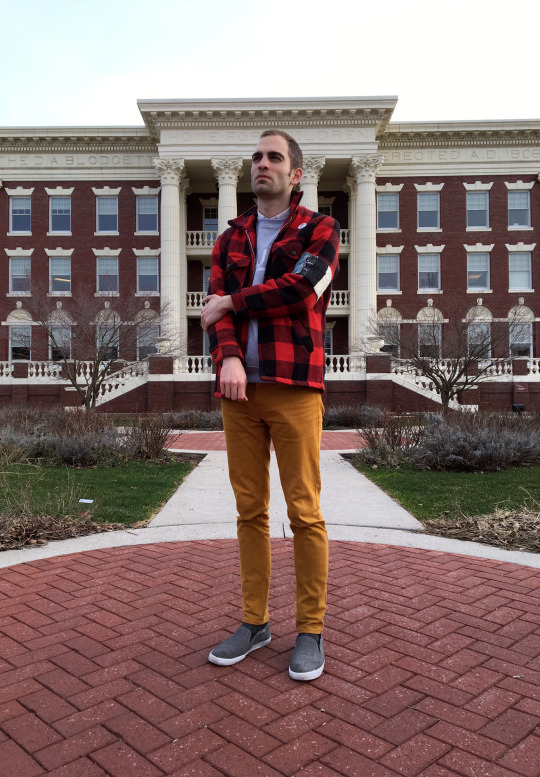
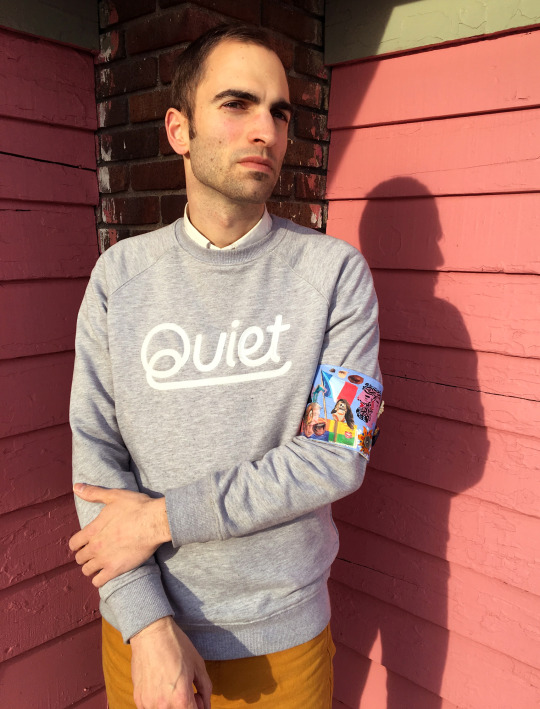
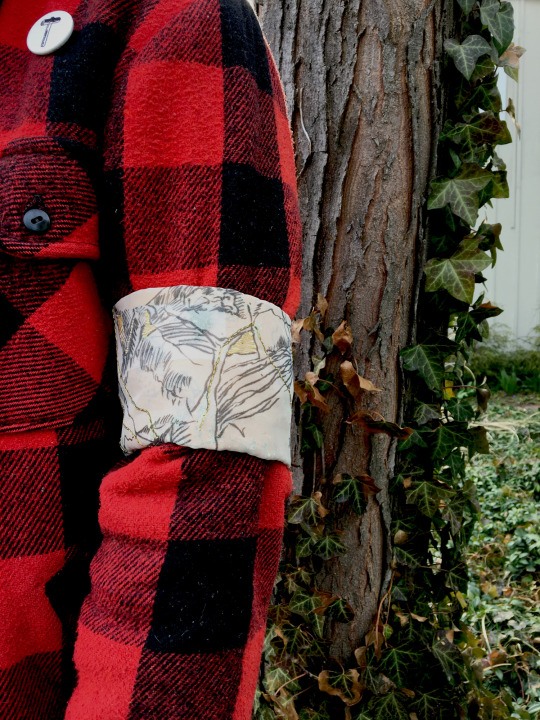
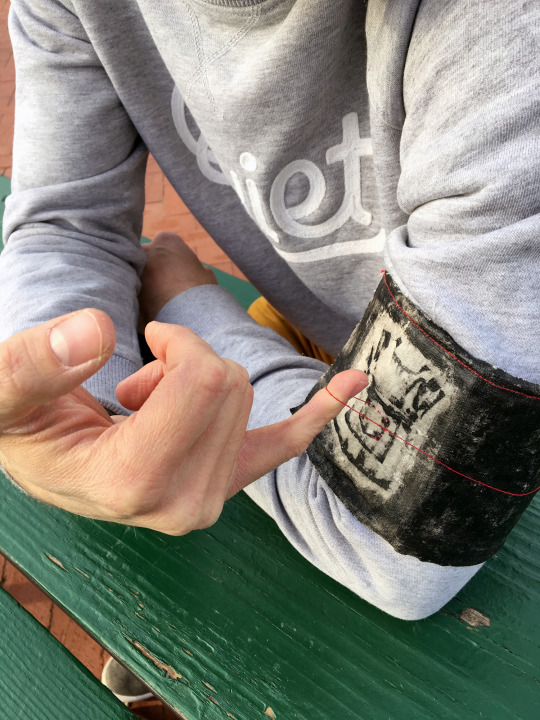

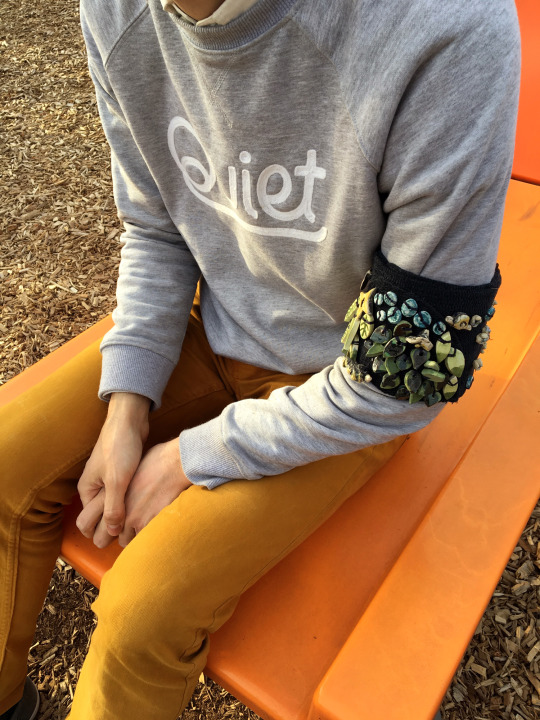
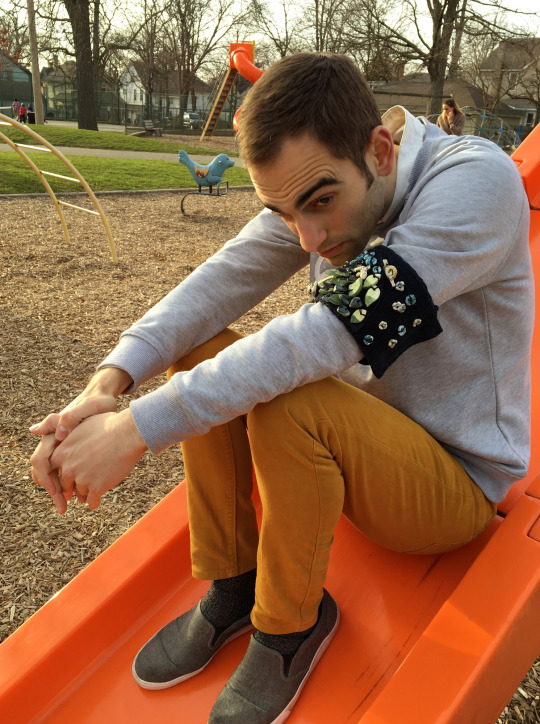
I’m just finishing up my tenth week of the 12-week run of Flex Gallery. Several days ago, I had a photo shoot to celebrate the five artists who’ve shown work on my arm so far (photo credit: Rachel McKay). So far their work has been displayed in Illinois, Michigan, New Jersey, and New York, in airports, museums, buses, airports and many places in between. It’s been a pleasure to wear their pieces and to interview each of them and learn about their passions and processes. Three interviews are up on Vis Ed currently, and three more are coming soon. Next week I’ll be wearing the final artist, Tag W.R. Hartman-Simkins, a designer and comics artist from Galesburg, Illinois now living in New York City.
7 notes
·
View notes
Photo
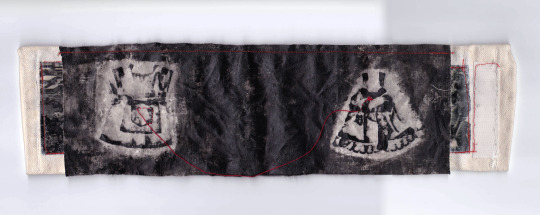
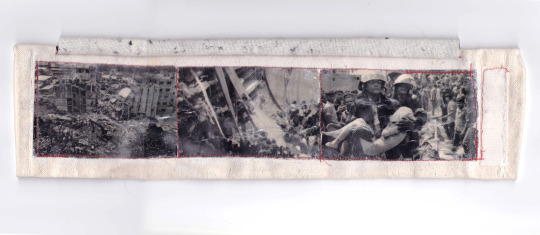
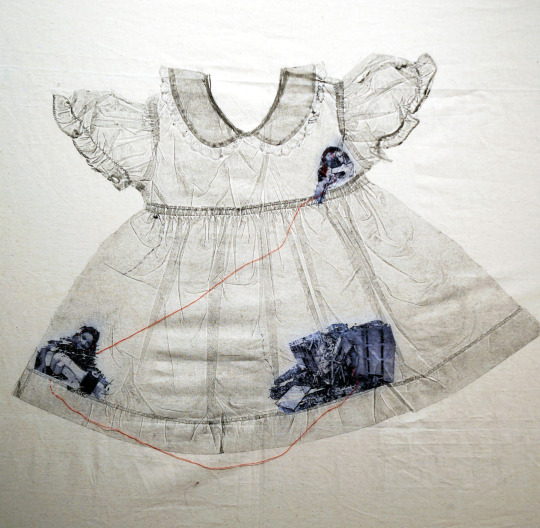
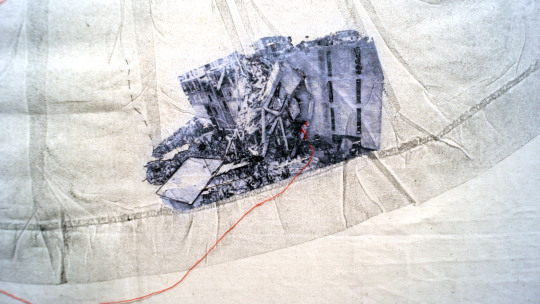
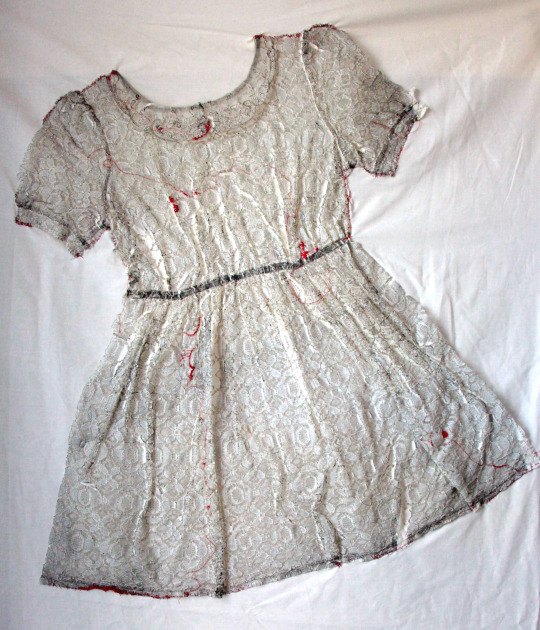

In response to a lack of public art opportunities during winter, on January 11th, I launched Flex Gallery, a mobile public art space located on my left arm. For the project, I sent canvas armbands to six artists, requesting they turn them into artworks. Each artist works in a wide variety of media, and I provided them with no themes or limitations other than the dimensions of the band. For the past week and a half, I have been wearing the work of Alyssa Roach, a local printmaking and textile artist and recent graduate of Grand Valley State University. I spoke with her last week to learn more about her work and her creative process.
ZJ: While you were majoring in art at Grand Valley, how did you land on your current trajectory with the work you're making now?
AR: I've always been really interested in clothing and fabric. In all of my classes, it was this constant choice of materials. Even in sculpture classes or technology and art classes, if I needed a material, and I needed a lot of it, I would use bedsheets that I had or spare clothing. The material really resonated with me for a lot of reasons, and when I got to printmaking, I would ask my professor different ways I could make prints of clothing; I was so curious about it. It started off as experimenting with doing etchings with soft ground, where I would imprint clothing into the soft ground and then etch it onto a plate. But I noticed when I did that, some of the soft ground stuck to the fabric, so one day in the studio I just thought, “Oh, I'm just going to try to print this and see what comes of it.” It was a cuff that had been pressed into a plate of soft ground and then went through the press with a piece of paper, and I loved the look of it. It was so much cleaner and simpler than etching and it seemed like it could be a lot more flexible. So from there we just started experimenting with ways we could start inking up clothes and make prints from them. It was a whole semester of just experimenting and taking notes.
ZJ: Have you been sewing and working with textiles from a young age?
AR: Yeah. I've been sewing since I was very young. I would always sew when I was a kid. I'd do things like stitch things into my dolls' clothes or change their clothes. Then when I was eleven or twelve, I helped make costumes for a dance performance that I was involved in.
ZJ: So you're currently making socially-engaged work. Were you always making that in college or did you just decide one day that that's what you really cared about?
AR: I feel like the subject matter that I'm working with was something I was always inclined to include.
So I guess at first it wasn't the objective, but it felt really pointless to me to make prints of clothing without that [focus on labor practices]. I mean, if you're going to make artwork about clothing, it's within the material, so it took a little exploring, but in the end it just needed to be there. It wasn't my starting goal, I just sought the issue through working with the material.
ZJ: What is fascinating you lately? What are you really into right now?
AR: I'm really interested in sculpture lately, and working with that as a medium. My mind's always drifting to different sculptural ways of working and how that looks within the subject of clothes and sweatshops.
ZJ: Do you have any ideas for that yet or is it something that you're just interested in at this point?
AR: I feel like I have too many ideas at this point. Which is a problem because I can't tell which one's are good, so I think it's time to start just working a little bit with it. Sculpture takes up a lot of room though.
ZJ: See, that's my problem. I've been more and more interested in 3D, but I feel like I don't have the lifestyle to support it.
AR: Yeah, with all the materials for printing already take up so much space in my room, makes it so messy and chaotic that I can't imagine adding sculpture, but I'm really interested in it.
ZJ: How have you been experiencing sculpture?
AR: Mainly through researching fiber art and 3D fiber art. I'm following a fiber art account on Instagram right now, and it's really good.
ZJ: Are there any artists in particular that you're inspired by right now or that you were inspired by during your development?
AR: One artist that doesn't work with fiber arts at all, but her work is very rooted in social justice is Sue Coe. She's a printmaker, and she makes work about animal rights. And she was the first artist that I saw working with a topic so rooted in social justice that it just kind of make me realize – see, in art school people talk about that kind of artwork as separate from the rest of [fine art] or [saying that] people aren't interested in viewing it, so then when I stumbled upon Coe, I thought, “Ok, this is someone who's been doing this for thirty years, she's reaching people, her work is resonating with people.” I connected a lot with her work and I still think about her and her work a lot. Her images are really powerful.
ZJ: Do you think that activist art has a special strength versus the other forms of art?
AR: Yes, I do. When you take art and a topic in social justice, I feel like it's really powerful because it's not just the information people are getting, it's also engaging their imagination in another way, so I feel like it creates a super powerful experience. Right now I feel like information is really omnipresent, especially in social media. You can go onto Facebook and in your feed see so many important, relevant articles, but you can view an article, and be really shocked by a scene or really motivated to do something, but then the post right below it is a really cute cat or someone's adorable child, so you're simultaneously being shocked and consoled. So I think what's really important with art and social justice in the twenty-first century is finding ways to get people to look at it and pay attention to it. Because people know about sweatshop labor. They hear about it and probably see it in their Facebook feeds, but they're desensitized to it, and I think art has this ability to present it in a different way where it sticks with people or it hits them in a different place where they actually feel motivated to do something about it. It's more memorable.
ZJ: It has an emotive power.
AR: Yeah, and I think that's really important now because you can ask anyone about sweatshop labor, and they know about it, but it's just information to them. So, I think the intersection of art and social justice has the ability to bring back the emotion when it comes to these issues.
ZJ: So you graduated recently, and you're having a show right now at Lantern and you've just had one at Sparrow, so what's next for you?
AR: I'm trying to go to grad school. I'm spending the next year making a second body of work for when I apply. And I'm working on all of my letters for the application process. So, it's not until January, but it feels like a new project. It would be for my MFA either in printmaking or fiber arts. And I'm not sure [which]. I really feel split down the middle. ZJ: Finally, what about the act of creation do you enjoy? Can you verbalize it?
AR: With printmaking, you do all this prep work, you ink something up and roll it or use your brayer and finally you think it's done, and then there's this moment when you peal [the material] back, and that is my favorite moment. With the process or printmaking, there's so much planning and cutting and carving and inking – everything is so time-intense, but then in just ten seconds you pull it away and that moment of seeing the culmination of all of your hard work is really powerful to me. Even if it's something I'm not happy with, it's still my favorite part. It's like opening a present.
Alyssa Roach's work is currently on display in a solo exhibition at Lantern Coffee Bar and Lounge through April 1. Lantern is located at 100 Commerce Ave SW, Grand Rapids, MI 49503
This interview has been edited for length and clarity. Posts by Zachary Johnson are also available via instagram under the name Vis Ed.
#viseducation#flex gallery#sue coe#printmaking#activist art#textile art#zachary trebellas#sweatshops#ranaplaza#fast fashion#flexgalleryinterview
1 note
·
View note
Photo
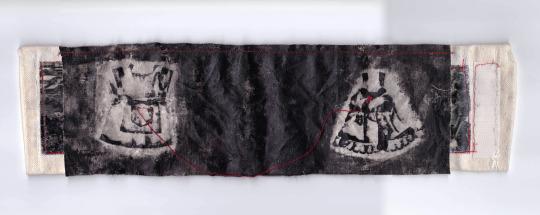
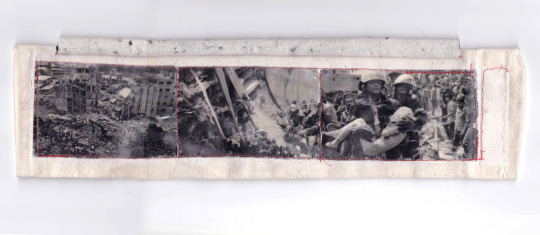
Alyssa Roach. Untitled. Relief ink, thread, and image transfer on canvas. Flex Gallery, Grand Rapids, MI. 2016. I’m currently on my eighth day of wearing this armband, created by Alyssa Roach, a local Grand Rapids artist passionate about sweatshop labor and our relationships to it as consumers. Check out the last bands by Megan Roach and Chris Sutton here and here. There are three more bands after Alyssa’s two week period, incorporating plant materials, comics art, and ceramics, and I cannot wait to see what they will all look like. An interview with Alyssa will be up this week, so stay tuned.
3 notes
·
View notes
Photo
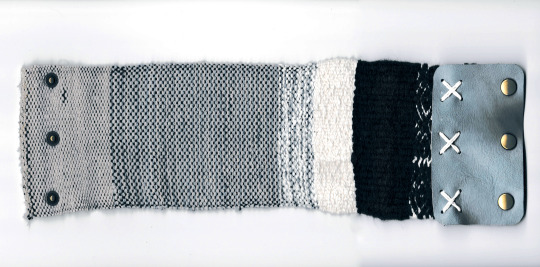
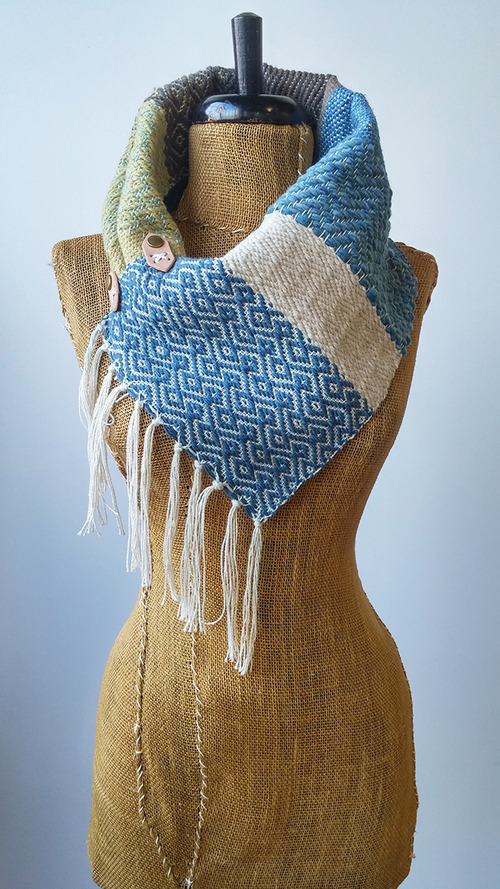
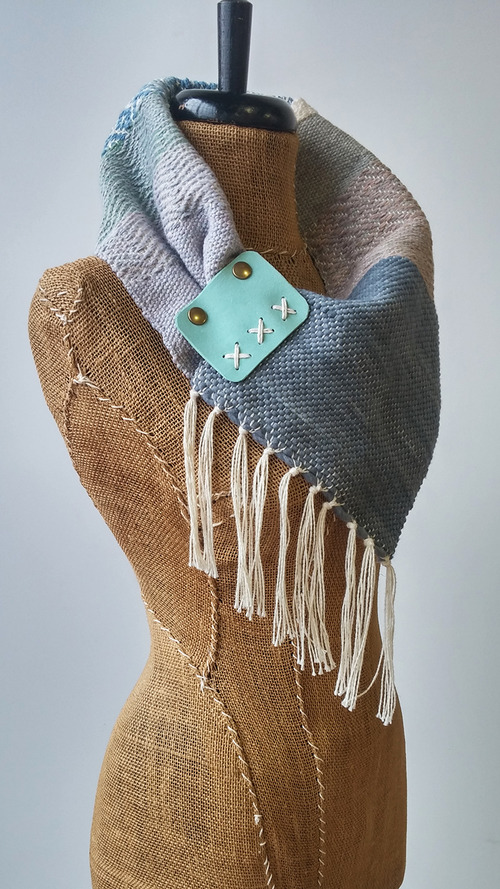
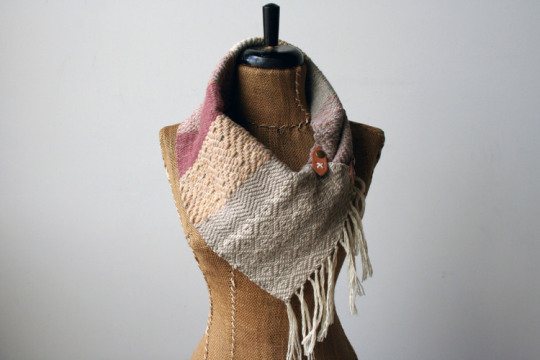
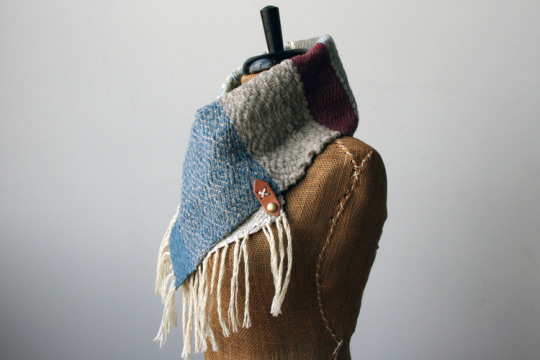
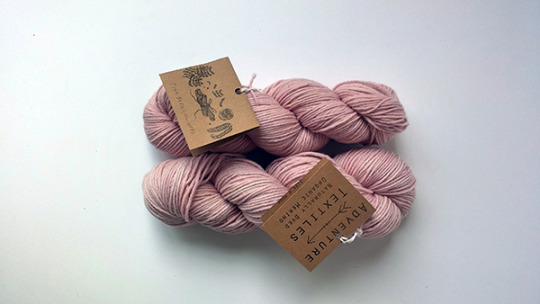
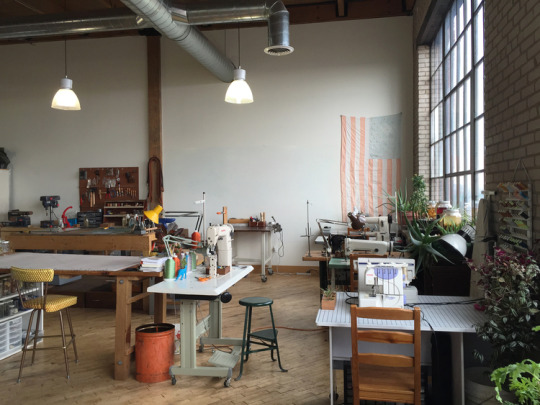
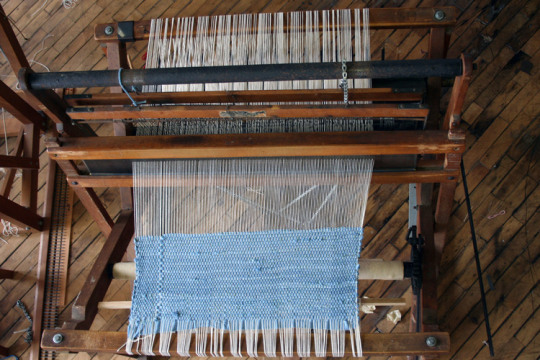
In response to a lack of public art opportunities during winter, on January 11th, I launched Flex Gallery, a mobile public art space located on my left arm. For the project, I sent canvas armbands to six artists, requesting they turn them into artworks. Each artist works in a wide variety of media, and I provided them with no themes or limitations other than the dimensions of the band. Over the next four months, I will wear each artist’s work for periods of two weeks.
For the past week and a half, I have been wearing the work of Megan Roach, a local fiber artist and owner of Adventure Textiles as well as co-owner of Parliament the Boutique. I spoke with her last week to learn more about her work and her creative process.
Zachary Johnson (ZJ): What did you go to school for?
Megan Roach (MR): I graduated in 2010 and went to Grand Valley for Sociology and Women and Gender Studies, so it was completely different from what I'm doing now. When I finished with my degree, I was looking at going to grad school and looking at either getting my masters or doctorate and then probably becoming a professor or going into social work. Both of those sounded very unappealing to me. I really liked getting my degree but not so much utilizing it afterward. So, I found myself in the art field.
ZJ: So then how did you start to transition into what you're doing now?
MR: I always had a studio in my apartment – mainly just a clothing studio: a sewing machine, big tables, that kind of thing, but I was friends with Elise [Marie, another Parliament co-owner], and she was going to Savannah College of Art and Design. She graduated from SCAD around 2010. So, she moved back, and we lived together from 2011 mainly because she had her business and had gone to art school and gotten a degree in accessories designs, so she wanted a big studio. I thought, “Oh, my studio could be somewhere else besides a tiny, little room in my house.” So, we had a large studio in our dining room. And that year when we lived with each other, we actually cleared our first floor during the holidays and had a pop-up shop. So, it was the beginning of having a storefront with Elise before we actually had a storefront on Division. Just watching her and her business grow made me want to do that too and live that sort of lifestyle.
ZJ: I'm sure that made it seem a lot more real and possible.
MR: Definitely. So, we would do dye baths in our kitchen and things like that. That's how I got into doing natural dyes.
ZJ: Were you working with textiles from a younger age already? When did that start for you?
MR: I was crocheting and doing embroidery from a much younger age. My grandmother taught me that as a child. That took a back seat when I was in school. In college I mainly focused on sewing my own clothes.
ZJ: It's great that a social relationship started to open things up for you.
MR: Definitely. Just watching Elise with her business and having that connection with something I made to something that could provide an income for me was really intriguing – and much more intriguing than going into the social work field and having that burn out. Doing something creative was definitely the way to go.
ZJ: So then how did that trajectory take you two into starting Parliament?
MR: After we'd lived with each other, Elise moved in with her parents to figure out what her next step was. And I was at the point of figuring out what my next step was too. At that point, I didn't have Adventure Textiles. I was going in more of the creative direction, but I didn't know what that would look like at all. I really liked natural dying and the colors I could get from that, but my main form of art was crocheting, and crocheting just takes so long. So, I was experimenting with different media as well as continuing my dye work. Around the same time that I started getting into weaving, Elise moved onto the Avenue. Originally Parliament was a studio storefront for Elise and [her brand] Little Wings when she first moved in there. But within a year, the space was getting too small, just because she had her studio and storefront and house in a thousand square feet. At that point she had been dating Jake [Vroon] for a while, and Jake had his studio in Have Company's basement. Then I had my studio at my house, and I at that point had one loom, and it was at my partner's parents' house, so I couldn't really use it very often. So, we decided to move into a group studio. At that point Jake and I took ownership of Parliament with Elise. And we were focusing more on promoting local artist work than only promoting Little Wings.
ZJ: How did Adventure Textiles come about?
MR: It came about when I got my first loom and started weaving and realized that weaving goes by so much quicker than crocheting. So, I could make it a viable business. I could pay myself and be able to make my art and sell it. And then just seeing how natural dyes looked in a woven texture; it's my favorite way to display them. So it was just all those things coming together. I started Adventure Textiles in early 2014, and then by the holidays in 2014, I started making the cowl that I make a lot now from just playing with designs. And I think that's when Adventure Textiles really started taking flight – when I started specializing in that piece.
ZJ: What do you enjoy about the act of creation?
MR: So, there are two main processes to my work. One is natural dying, and the [enjoyment] in that is that I can change something that's white to something that has color. And that's usually based off of something I find in nature. Like, with goldenrod season in the fall, when I look at them, all I see is dyes now. And to be able to cut that stuff up, boil it down, put white yarn in it, and have it come out a really bright yellow is fun. It's fun to be able to change plain yarn into something new.
ZJ: I didn't realize you sourced by hand.
MR: One of my favorite dyes of last year was acorns and then overdying a piece in iron to get a really nice gray. I like to harvest a lot of my own dyes, but I also use powder dyes because I can get more exotic ones. Like right now I'm dying with stick lac, which is a bug secretion. I thought I was going to get it in powdered form, which is a really nice way if I'm going to be ordering dyes and not harvesting, but I wasn't expecting to get a hunk of bug secretion, and now I have this and I'm like, how do I do this?
And then I love all the steps of weaving. Programming the loom is really nice. It's a tedious process of making a bunch of strings the same length, usually eight to one hundred strings seven yards or longer is what I do to set up for a batch of cowls. So, just making the warp and setting up the loom and then the actual weaving process – weaving colors together is actually my favorite part. It's just so nice and repetitive. So, it's just a great process over all.
ZJ: Do you feel that textiles or fibers have a special strength among the art forms?
MR: I think there's definitely that connection to personal histories with textiles – that's something I find with my cowls. I feel like a hear a lot of personal stories connected to weaving or knitting or crocheting and that makes textiles so important, especially handmade textiles. But I do think it's probably a little cheapened with mechanically made textiles. One of my big focuses is on natural fibers. Everything I do is with cotton, wool, bamboo, silk, etc. I think now when you buy a shirt, nobody even looks at the fiber content of what something is, which I think is really sad. So, I feel that fibers are really important, but maybe undervalued by the general public.
ZJ: What is something that's fascinating you lately?
MR: Something that was fascinating me last year was traveling. I did a cross-country road trip and I feel the need to do some major traveling this year. So already I'm trying to plan some kind of trip to Colorado to go back to Denver. Traveling and being able to mix that and business, that's something that I long for from a nine to five job. I'm trying to figure out how I can get Adventure Textiles to pay for me to go places. In the past I've mostly been doing [art] shows and music festivals in Michigan, but now I'm expanding that and trying to figure out how I can go to a show in Colorado or do a music festival over there. Last year we went out west, so we drove from Grand Rapids, and we ended up in San Francisco.
ZJ: Looking at the armband you made, could you describe how you created it?
MR: This is a woven band. It's primarily a plain weave with a little bit of patterning in it. I made a couple different bands, but I liked this coloring the best, especially for an orange coat and potentially a red and black coat. So, it isn't using very many dyes because this grey section is acorn and iron and the blue is indigo, maybe indigo and iron too. Ther's a white cotton section, which is all is wool, and this black area is kind of fun. One of my new projects is learning how to spin yarn, so this is actually some of my first hand-spun yarn and this is all alpaca. It's been really interesting to watch the transition from a whole pile of wool to yarn. And now I can weave it up and make it into something else.
And then the other part of Parliament is leather working studios, so this piece was actually a leather sample we had lying around. So it's really convenient because I can just use a lot of the scraps that Jake and Elise have left over. And, it's great to have their expertise on what I should be doing and what I should be using. It's a fun work environment to be in.
ZJ: Do you have any fiber artists that inspire you?
MR: One of my favorite fiber artists right now is Maura Ambrose who runs Folk Fibers. She does all natural dyes and makes beautiful quilts and lives in Texas. She has a beautiful life of harvesting pomegranates off her pomegranate tree to dye things. She has a two-year-old child and recently posted a picture of her doing her first natural dye bath and helping with a little apron on. I thought, “Ok. You're my hero.” I want do to that one day. So not only does she make beautiful work, but she's living a dream of mine.
ZJ: What's next for you or for the three of you? What do you have coming up?
MR: Definitely travel is a big one and having shows attached to that. Last year I did my first Renegade Craft Fair in Chicago and it's inspired me to do more for the holidays this year. I would really like to be able to travel and do at least three of the Renegades as well as other big shows. It's been a pretty nice process that I've gone through. When Elise first moved back from school, I remember going to the Fulton Street Artisans' Market and setting up for one of her first shows and helping her out. Now I have my own business and am able to do my own craft shows too, either separately or with Elise and Jake. But being able to do these bigger shows like Renegade has always been a dream for me and Elise. Now we've done that, so it's really nice to be able to think of the next steps, like how can we go bigger? What shows can we do? This interview has been edited for length and clarity. Posts by Zachary Johnson are also available via instagram under the name Vis Ed.
#vised#grandrapids#parliamenttheboutique#meganroach#emerging artists#fiberart#loom#weaving#flexgalleryinterview
2 notes
·
View notes
Photo
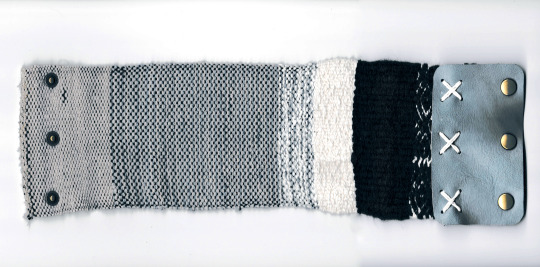
Megan Roach. Untitled. Hand woven and dyed wool, leather, thread, snaps. Flex Gallery, Grand Rapids, MI. 2016.
I’m currently on my fifth day of wearing this armband, created by Megan Roach, co-owner of Grand Rapids-based business Parliament the Boutique as well as Adventure Textiles. Check out the last band by Chris Sutton here. There are four more bands after Megan’s two week period, incorporating screen printing, plant materials, comics art, and ceramics, and I cannot wait to see what they will all look like. An interview with Megan will be up next week, so stay tuned.
#meganroach#adventuretextiles#parliamenttheboutique#publicart#textiles#fiberart#flexgallery#grandrapids#vised
1 note
·
View note
Photo
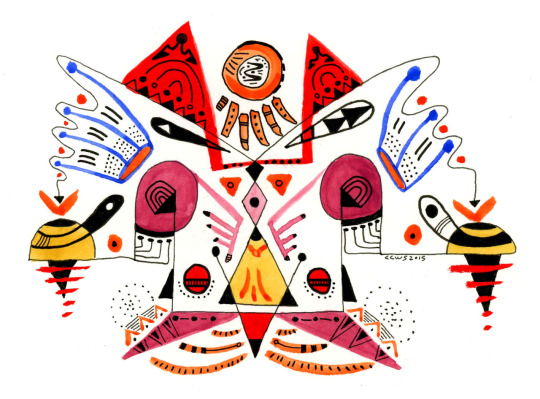
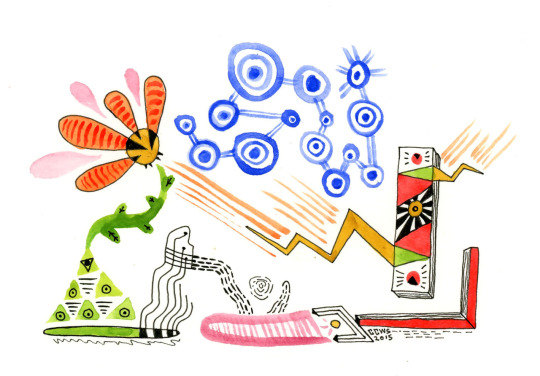
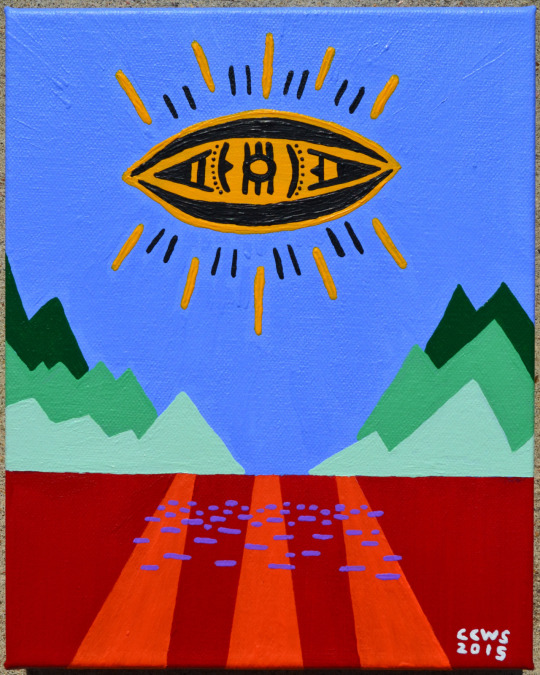
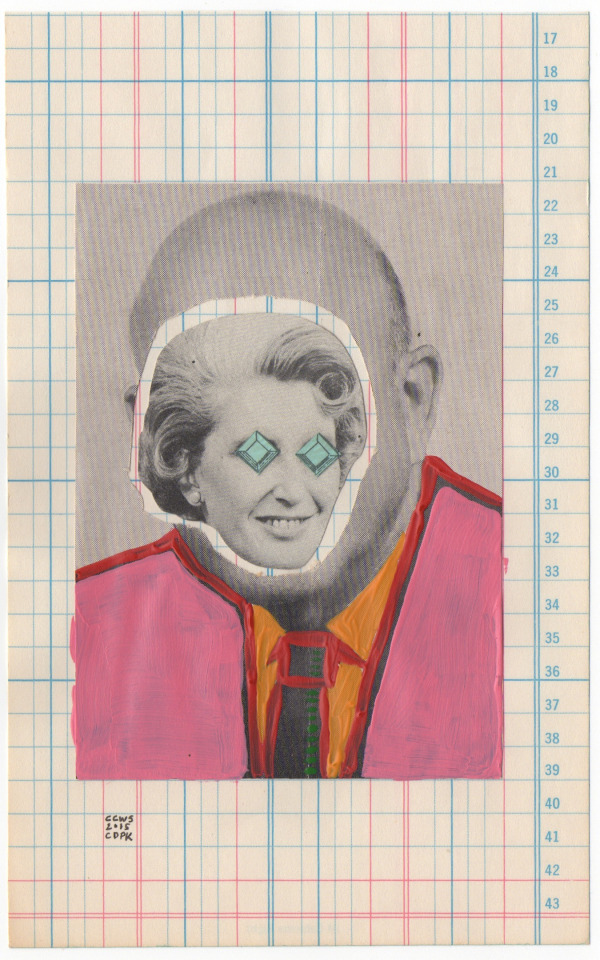

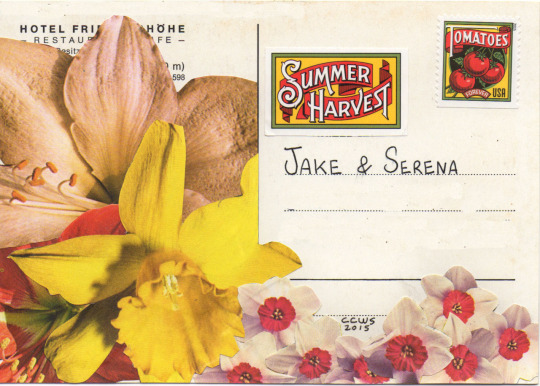
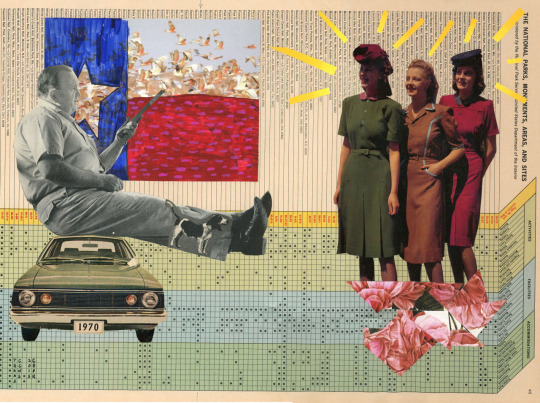
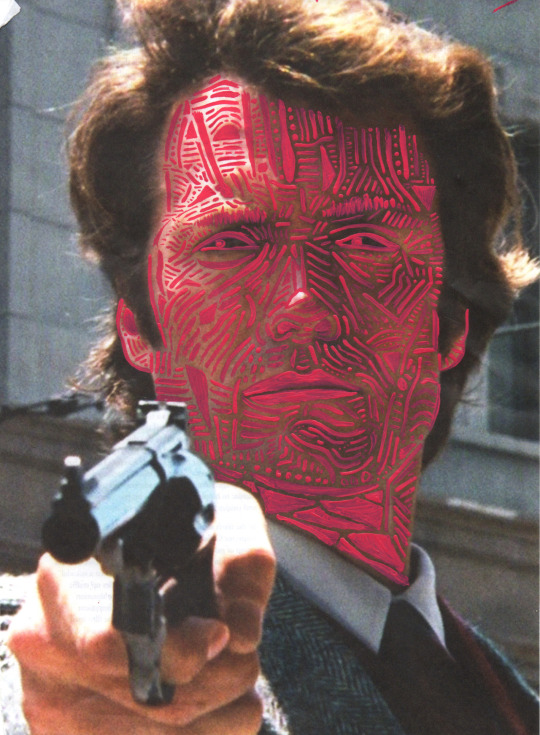
Flex Gallery and the work of Christopher Sutton
In response to a lack of public art opportunities during winter, on January 11th, I launched Flex Gallery, a mobile public art space located on my left arm. For the project, I sent canvas arm bands to six artists, requesting they turn them into artworks. Each artist works in a wide variety of media, and I provided them with no themes or limitations other than the dimensions of the band. Over the next four months, I will wear each artist's work for periods of two weeks.
For the past week and a half, I have been wearing the work of Christopher Sutton, an Austin-based artist and alumnus of the Savannah College of Art and Design. I spoke with him over the phone last week to learn more about his work and his creative process.
Zachary Johnson (ZJ): We're both graduates of art history programs who became artists as well. How did you start to make work?
CS (Chris Sutton): Ever since I was young I've always drawn and been creative in that way. And then when I got into comics in high school, I drew a little bit more, but I never really connected to any art teachers. I had an art class freshman year of high school, and I didn't like the teacher, so I never took art again. So it was something that I knew I liked, but I didn't really have a direction.
Once I started going to SCAD [the Savannah College of Art and Design], and I had people that I knew who were going to be professionals, it was something for me to do while I was hanging out with them. And then it just morphed into its own thing where now I can't not make something. I go crazy if I'm not creating something in a day.
ZJ: Do you usually make something every day then?
CS: Yeah. I always have five plus projects in the works, so I get motivated about one thing and work on it and then get stuck and work on another piece. But then I get an idea for the first one and stop and go back to it. It's that kind of process.
I think [SCAD] really drove me in the direction I'm in now where I like doing collages, acrylic paintings, and paper sculptures as well sometimes. It really all stemmed from being in college and not having a lot of resources, so I was just trying to make something out of whatever I had in my room. I had a lot of friends that smoked cigarettes, so I made tiny little matchbooks for them and it kind of just evolved from stuff like that. It was never my intention to make something that would go on a wall, maybe just something that someone would have on a knicknack shelf in their apartment.
ZJ: Is that still your intention or are you interested in exhibiting work at this point?
CS: Now I'm trying to focus more on showing. I feel the difficulty with that is [the question] what would people actually want to hang up? The biggest thing with me is every time I make something, it just looks like something I make, and I have an issue with that. It just makes me want to start on the next thing.
ZJ: Are you not completely satisfied with some pieces then?
CS: Yeah. I wish I could step back and look at them from not my own perspective to see what it would look like. But I also feel like that [lack of satisfaction] kind of helps me be more critical of myself.
ZJ: That's something that Ira Glass talked about once. It's a quote of his that circulates a lot. It's about how when you're starting to make things, there's a period where you have really good taste and a really good eye, but for a while you're continuously unsatisfied with your own work because you know what's good, and you apply that to yourself. And he says it's just a process to get where you like what you're making and feel that it's worthy.
CS: Yeah, I feel like I have a pretty good understanding of what I'm able to do, and with that mindset, if I were to say what my biggest skill is, I'd say composition. So whenever I create something, composition is the first thing I'm thinking about, especially when it's a larger piece. I think about what I'm able to do and the materials I have and then it evolves from there; I can already see where I'm going.
ZJ: Have you been playing around with materials, expanding as you've gone along?
CS: Yeah, totally. When I first started it was just mostly collage. And then it wasn't until about two years ago that I decided to start painting; I did a painting on a back of a kid's book that I gave to my sister. And it made me less scared about trying to do a painting.
At the same time I was just really nervous about trying abstract art because I always thought that was maybe something that was too easy, and I didn't want to necessarily do that, but those were the images that kept on coming to me. So, I think once I finally embraced that and did some abstract [work] to see what it looked like, it really opened up what I felt comfortable with.
ZJ: I do like how your work looks like it's grown out of doodling, but then it's gotten more and more complex.
CS: Absolutely. And that's a composition thing. When I take photographs, they're a lot emptier, and there's a lot of negative space, but when I do a collage or a painting, I'm constantly trying to fill up space. When I look at an art piece, I definitely like a lot of detail. I don't really think my work has a lot of detail per se, but I definitely think it has a lot going on [within it]. I like to try to create scenes where they're constantly pulling the viewer's eye all over the place.
ZJ: So you're not going for a center point.
CS: Generally not. Recently I did a piece for my sister's wedding. So I wanted to do a sillhouette of her and her husband and the other elements started from there. The piece ended up having four focal points, but I started with two and went from there.
Whenever I create stuff, I always have the idea that I'm sending stuff to family members, so I don't feel as nervous about making something.
ZJ: How do you acquire the materials for your collages?
CS: I'm always looking. In college it was easier; I would literally pick up everything that was at a coffee house. Now I'm in spaces that don't have flyers so readily available like in Savannah. I have this shop that's connected to the public library, and when books are no longer fit to be in the Austin Public Library, they send it to this store and it's fifty cents for a paperback, a dollar for a hardback. And because they're mostly damaged in the first place, I don't feel bad cutting them up. So, whenever I'm running low, I'll just go and fill up a box and pull from there. I like materials where I don't know what I'm going to do with it, but then I can create from it once I come up with an idea. I'll still pick up flyers and stuff, but I'll usually go to used bookstores for materials.
ZJ: Have you shown at this point?
CS: I've only gotten into one show, but I've only applied to one show, so it's worked out so far. So, I have a piece hanging up at the tax office at the town text to mine.
ZJ: The tax office had an art show?
CS: Yeah, it's kind of too bad because the hours are something like 8 to 4:30, but I think a lot of people must see it. Definitely my plan for 2016 is to create some kind of solo show. I just need to find a space I can afford or a company I can link up with.
The other thing I'm trying to work on is having more pieces because whenever I create something it's always with the idea that I'm already giving it to somebody or for a specific reason. I create it, and all of a sudden I don't have it anymore. So I'm trying to work on a lot that I just have on hand for myself so I can create some kind of show.
ZJ: You mail out a lot of pieces. I've gotten some postcards and small pieces from you, as has my brother, but I don't know who else has. How many pieces would you say you send out a year?
CS: Well, if we're thinking postcards, a year would be hard to say, but I'd say at least twenty-something a month.
ZJ: Wow That's pretty impressive that you're creating so much.
CS: Well, whenever it's a smaller canvas, it's a place for me to think about ideas. Recently I did a bunch of tiny Spurs basketball paintings for some people and it helped me think of how I'm dong a certain process. For instance, I hope to try and get into oils soon, so for that I'll get a bunch of inch by inch canvases and do a few paintings with that to kind of see how that goes, which will help me get into larger oil painting. And whenever I do postcards I'm generally thinking about a project I'm working on and it helps me think some ideas through while actually getting content on paper.
And honestly the whole idea – so much of creating art for me is I like the idea that I was alive that day and I made that and the idea of one day having thousands of postcards and just thinking about where those might be. Even if someone gets my postcard and just throws it away, it's still out there, and I like that about it.
ZJ: Where do you see yourself moving as an artist?
CS: The biggest thing right now is that I'm much more focused on bigger projects. So much of what I would do in college would be postcard-sized collage work. I think now that I'm having more patience working with canvases and working on bigger cardboard to do collages, I think the direction I'm really headed is showing my work instead of just doing it because I feel like I have to. And don't get me wrong, I love the way my brain works that I really want to create something everyday that I wake up.
ZJ: Is there something that you want your audience to receive from your work?
CS: The biggest thing is...if someone were to look at it, I would want them to be engaged more than just a quick glance. I like the idea that my pieces don't just have one big thing going on, but a lot of smaller details. I try to include clues along with the general idea in those works, so that people are constantly thinking about what they're looking at. It's not always there [those clues, that detail], but when I do a piece that I work on for a while that's generally what I tend to think about.
ZJ: Do you feel like you're influenced by any other artists, either in big ways or in small ways?
CS: I've always been a big fan of Kandinsky. I wouldn't say necessarily the composition or flow I would get from him, but certainly the colors. I still remember learning about him at SCAD and just being blown away by what he was able to create – and wishing I could be in a room and talk to him for a bit – that'd be incredible.
He is who I would go for in terms of fine artists, but the biggest thing I would draw my inspiration from would be film and television because that's definitely my biggest hobby and something that I'm constantly consuming in my free time.
ZJ: So what have you drawn from that that's been important to you?
CS: I think that's a big place where my composition comes from. Thinking about cinematography is something that I really got into when I was attempting film school at SCAD before I switched to art history.
I think that comes off the most in photographs I take. Also...I've been doing a lot of colorful abstracts and in a lot of ways I view them as concept art for a movie. Cause you had mentioned about a lot of my stuff stemming from doodles, and it really does. So I approach my work in different stages. If I really like something that comes to my mind I might draw it on a pad of paper with a pen, then I might try a watercolor with it and then if I really like it, I might pull elements from that or just expand it onto a canvas. So in my mind, I think of it as different media and stages in how complete it is, so it's kind of related to film in that way.
This interview has been edited for length and clarity.
4 notes
·
View notes